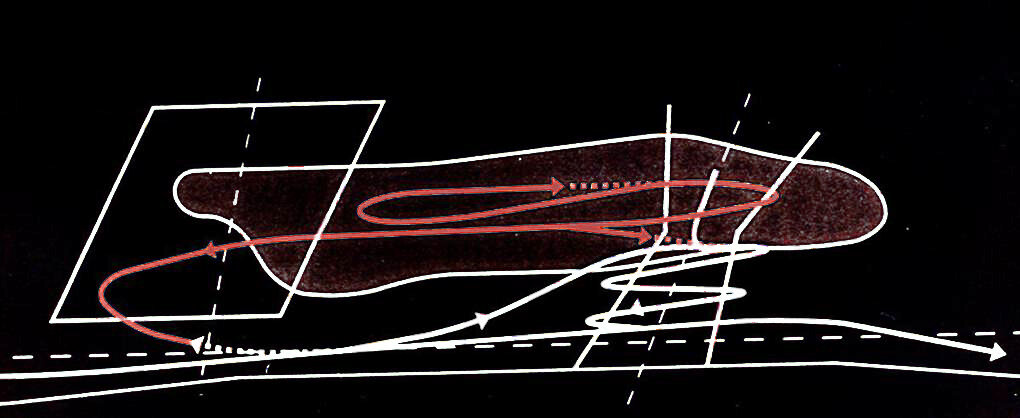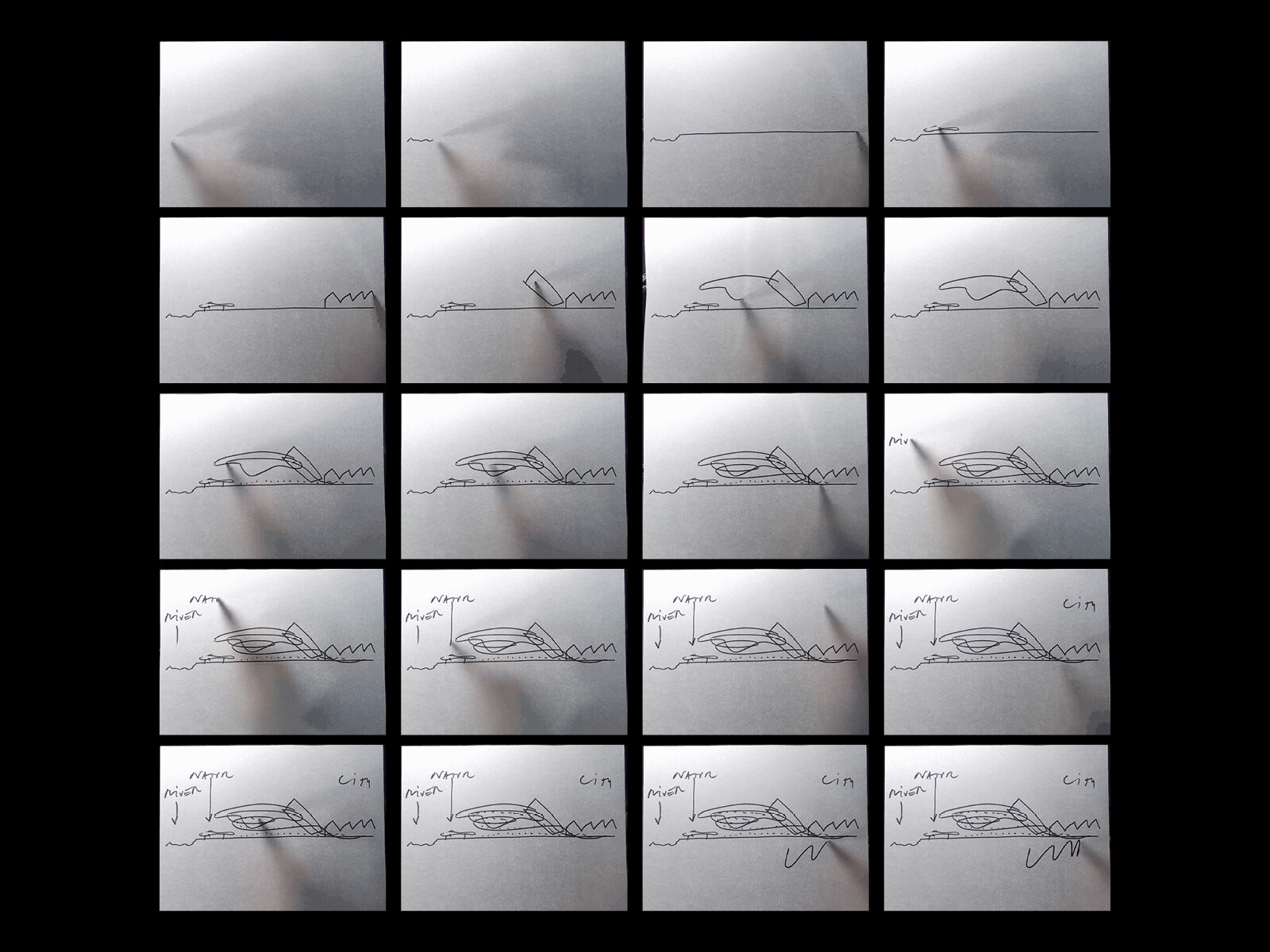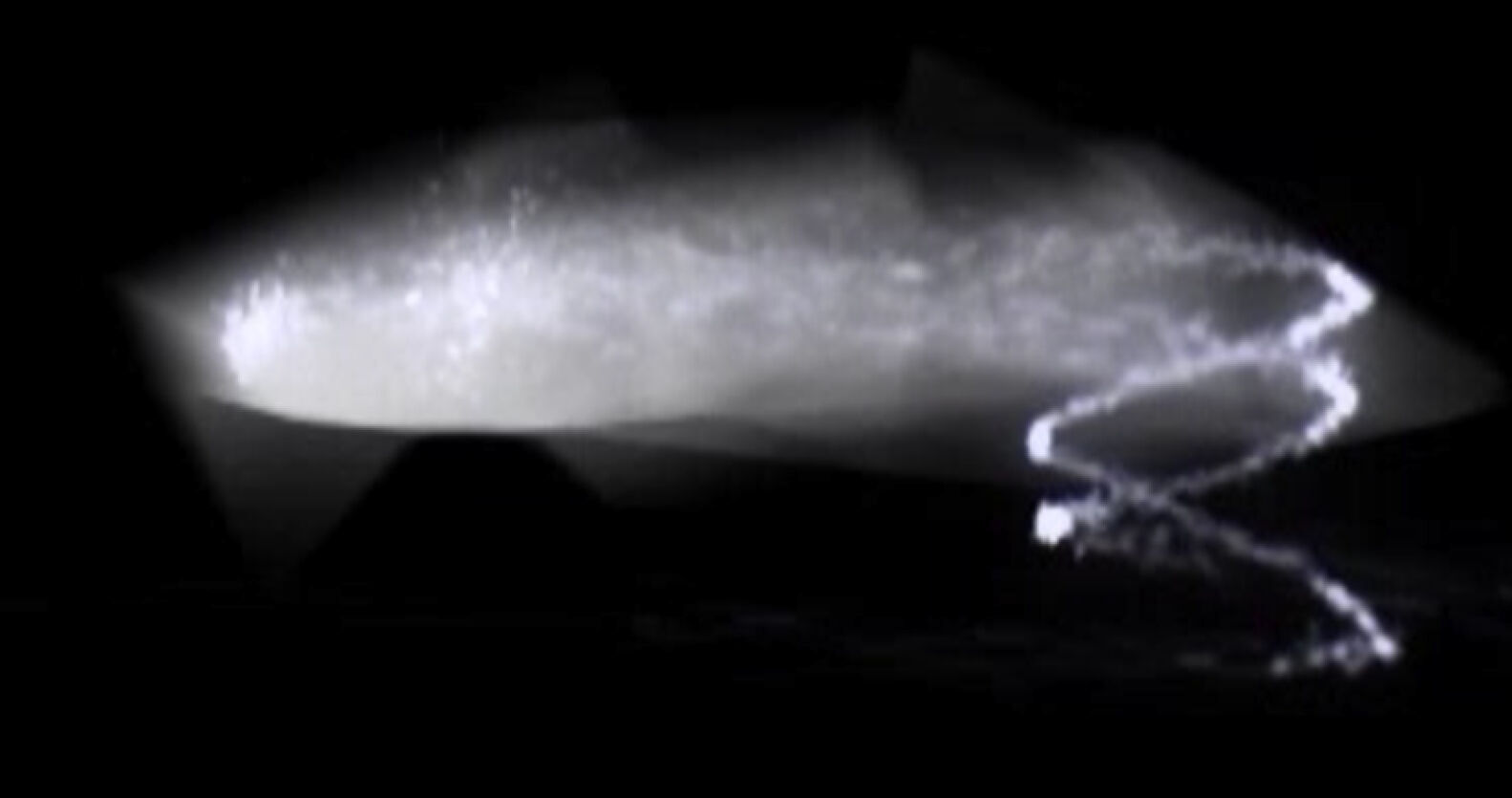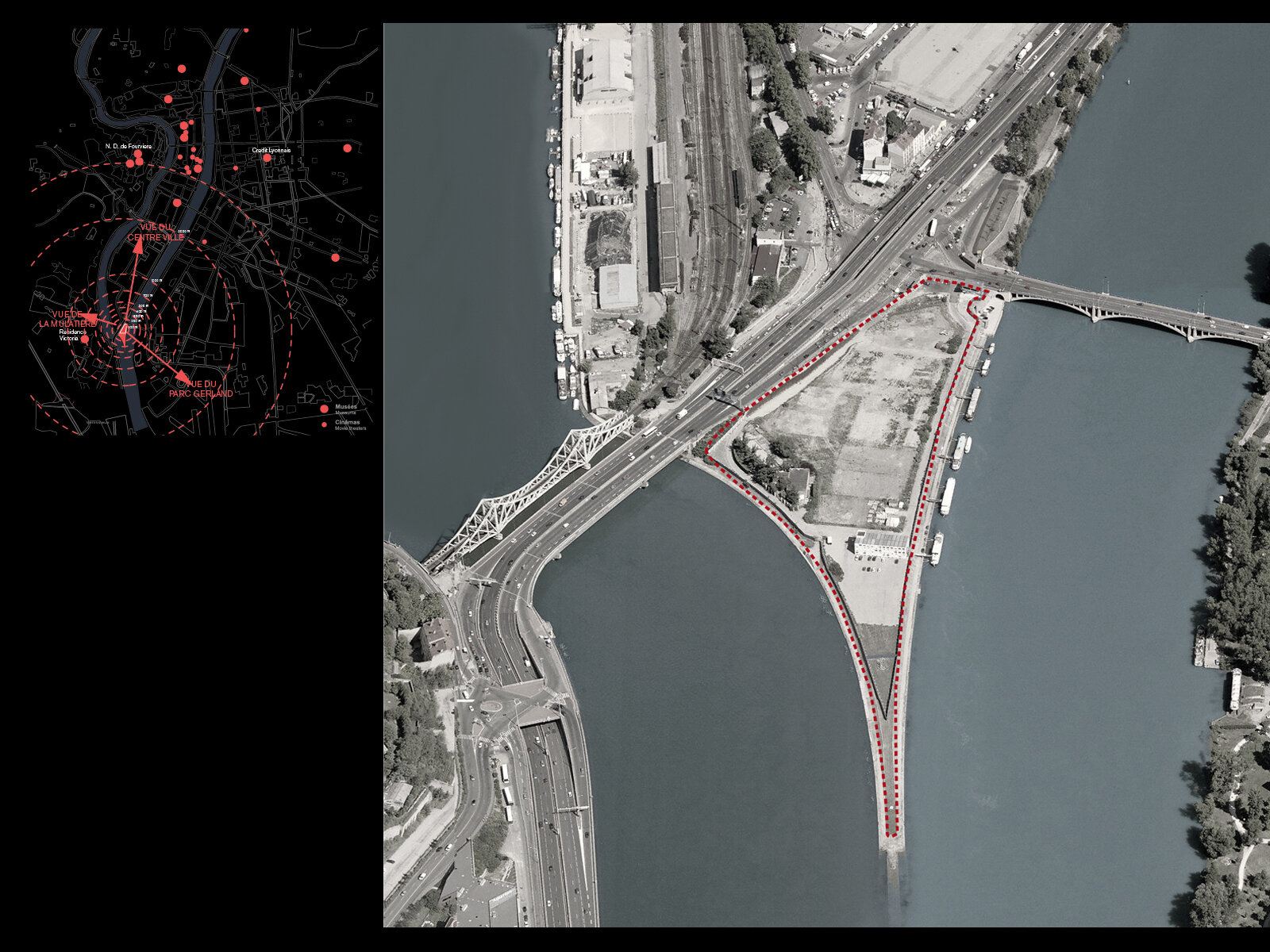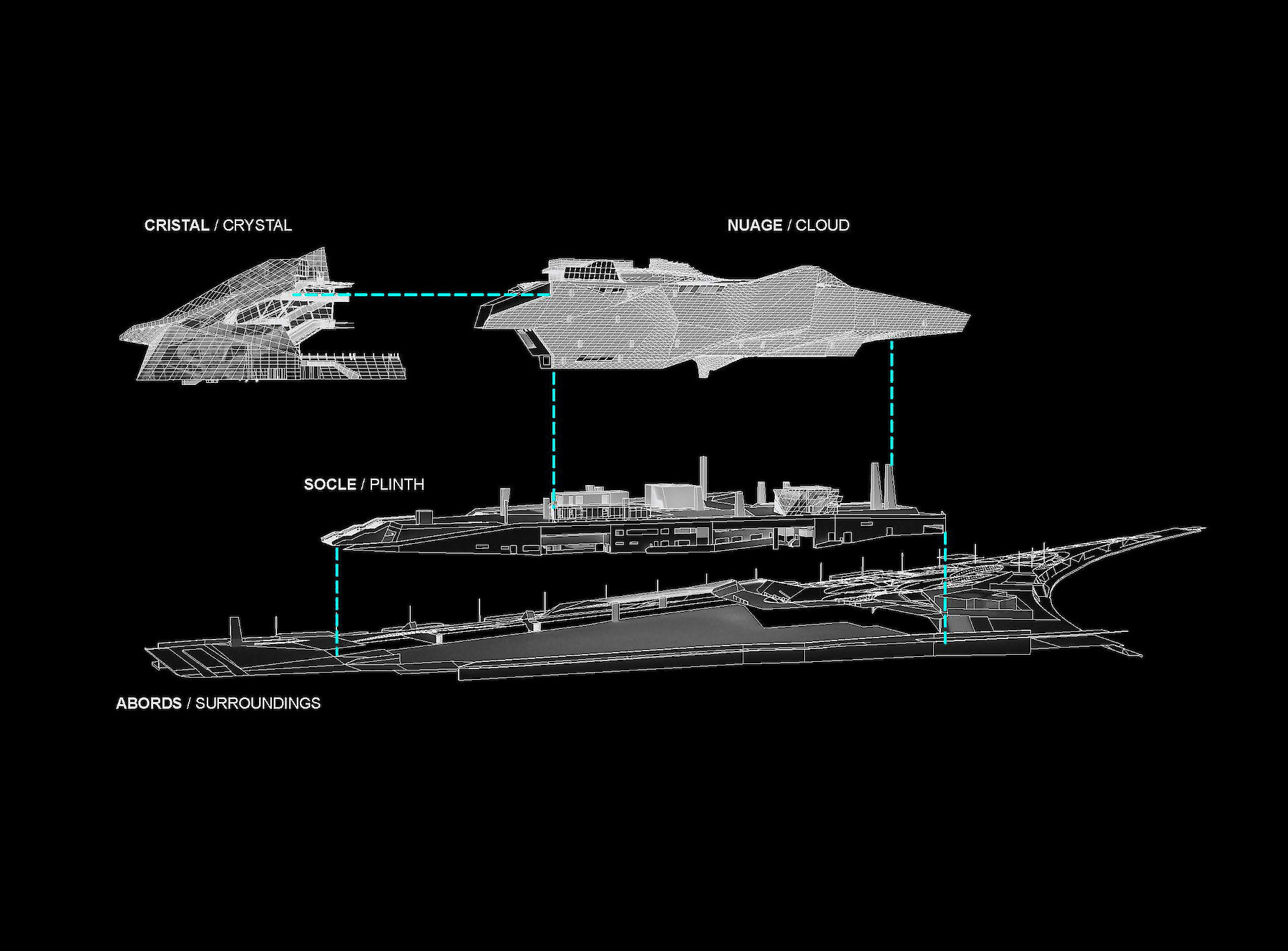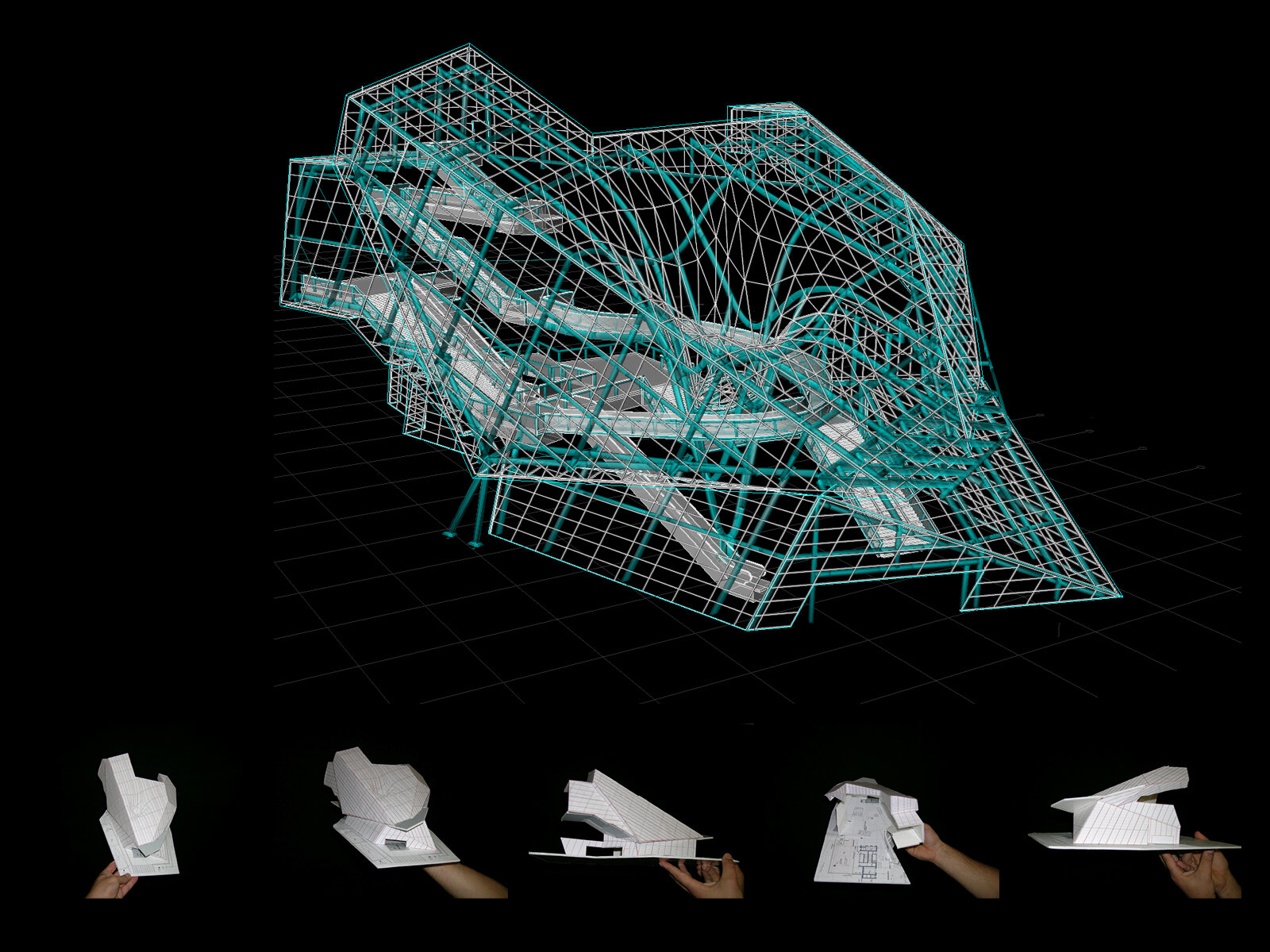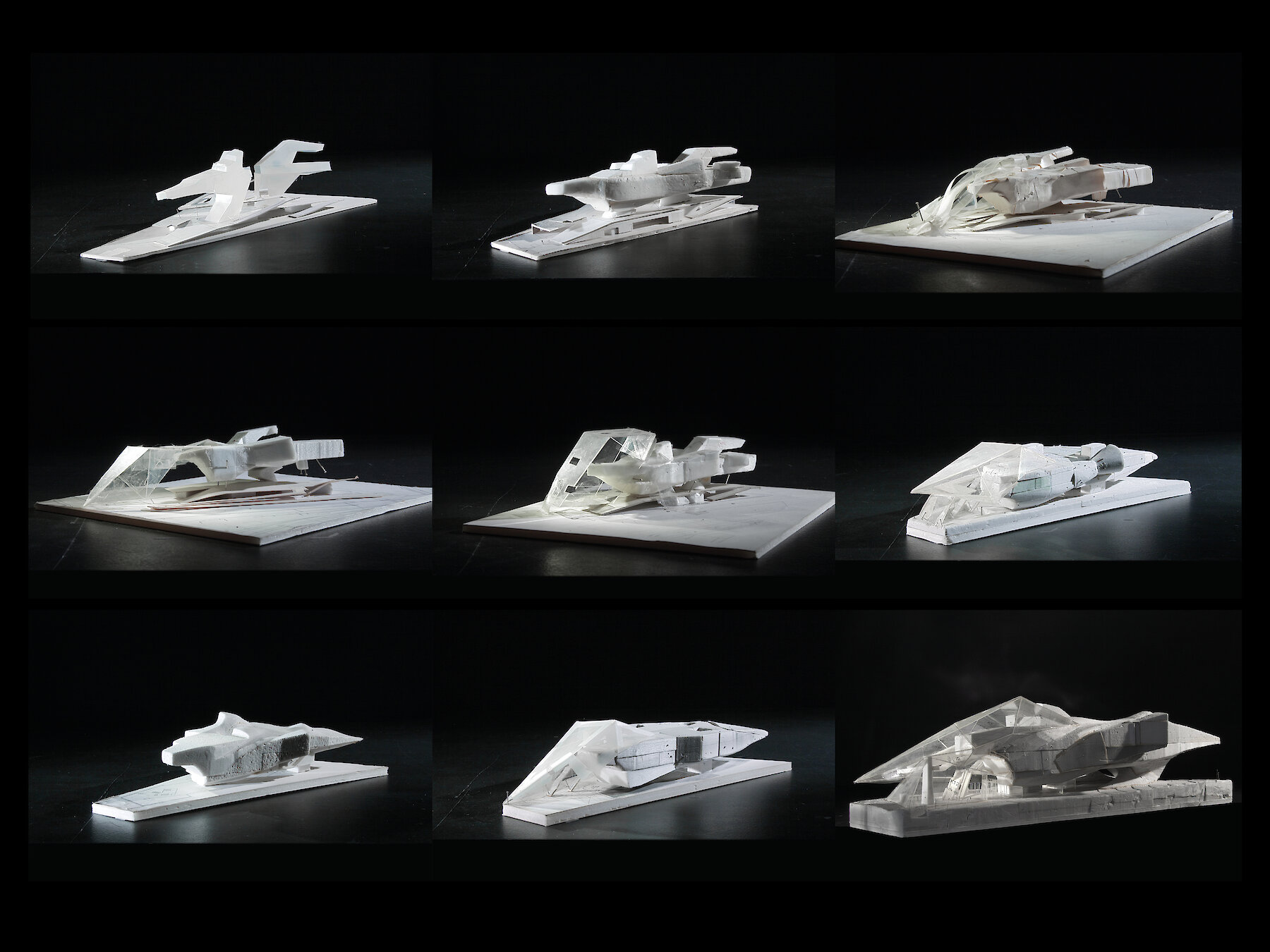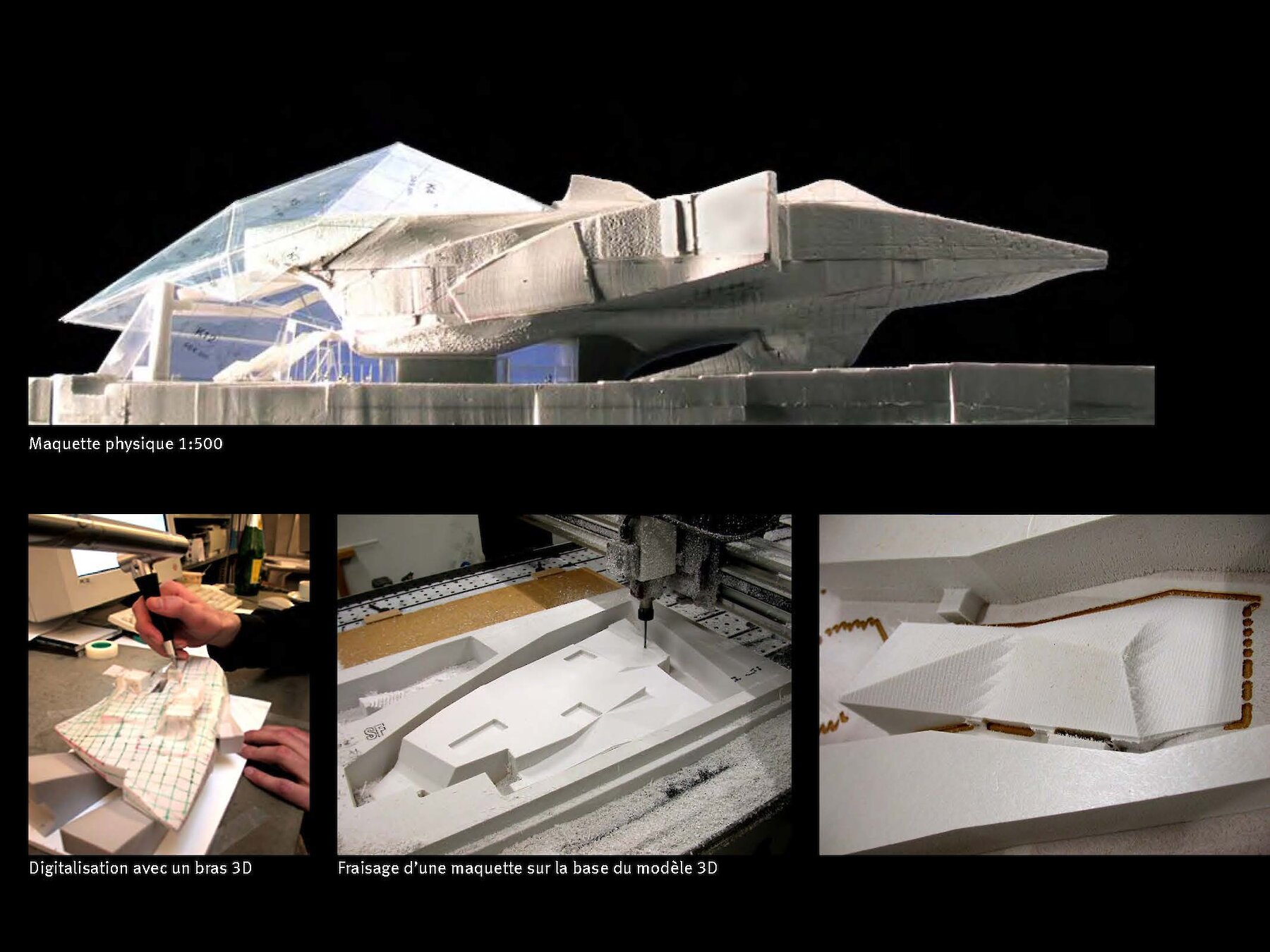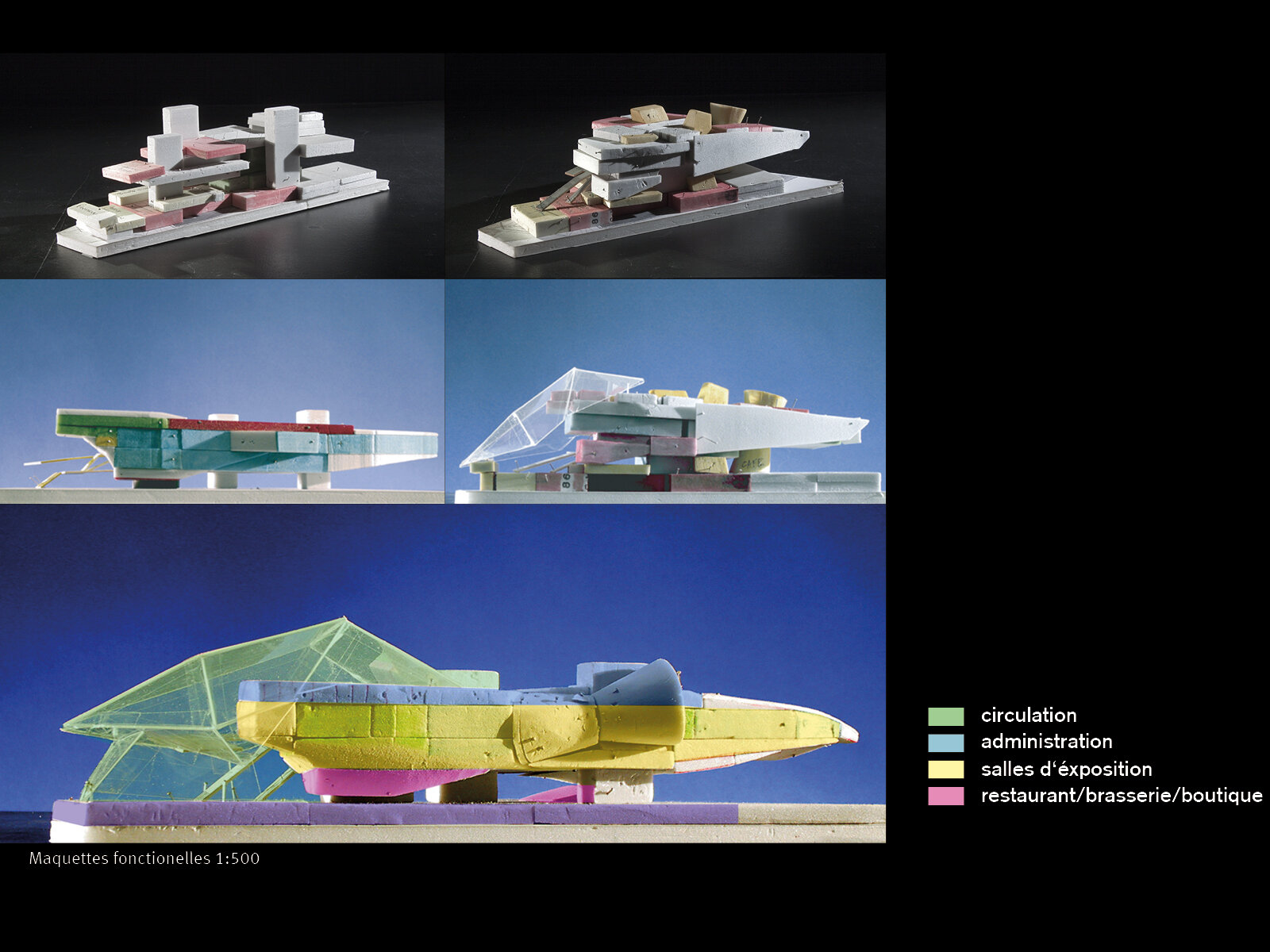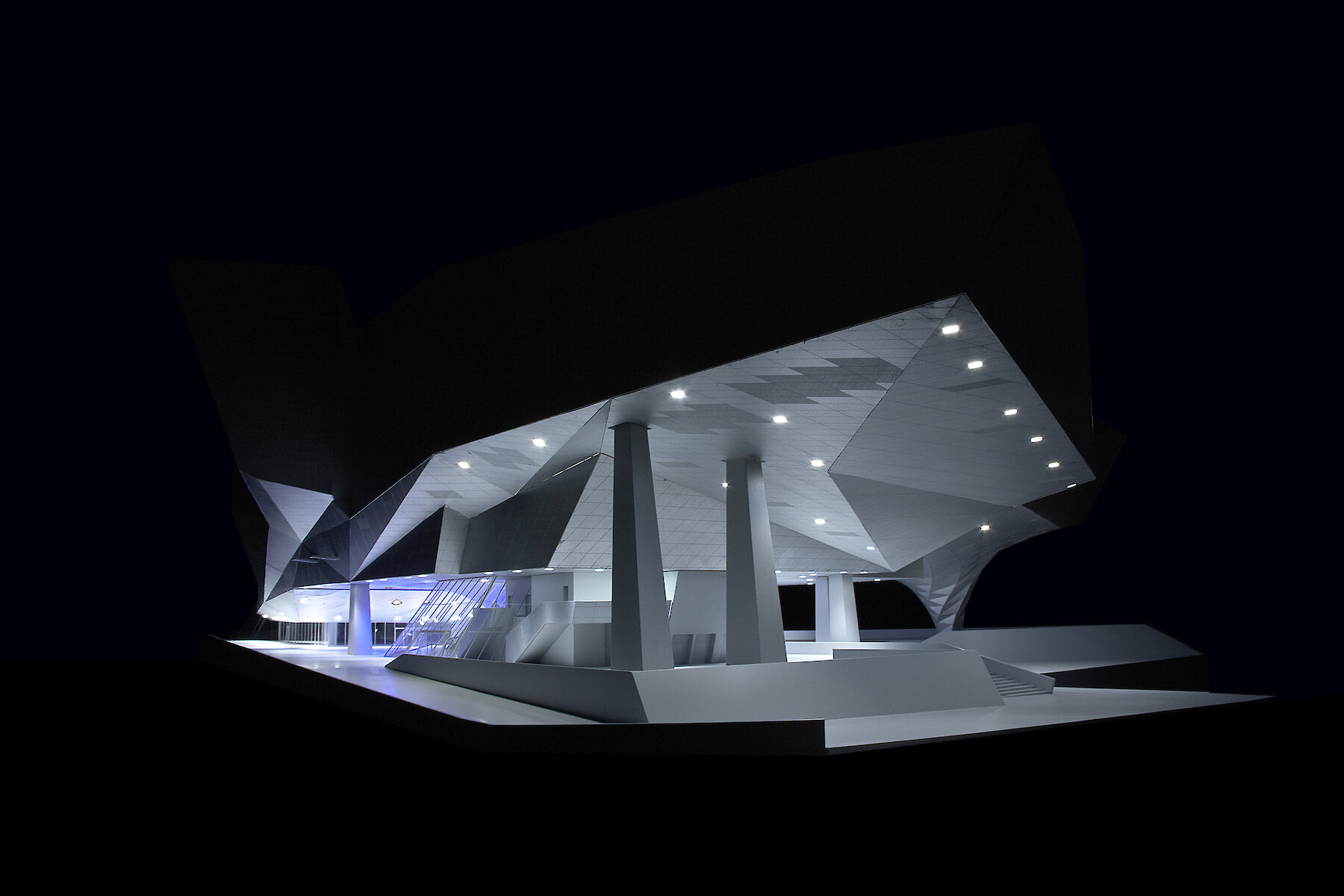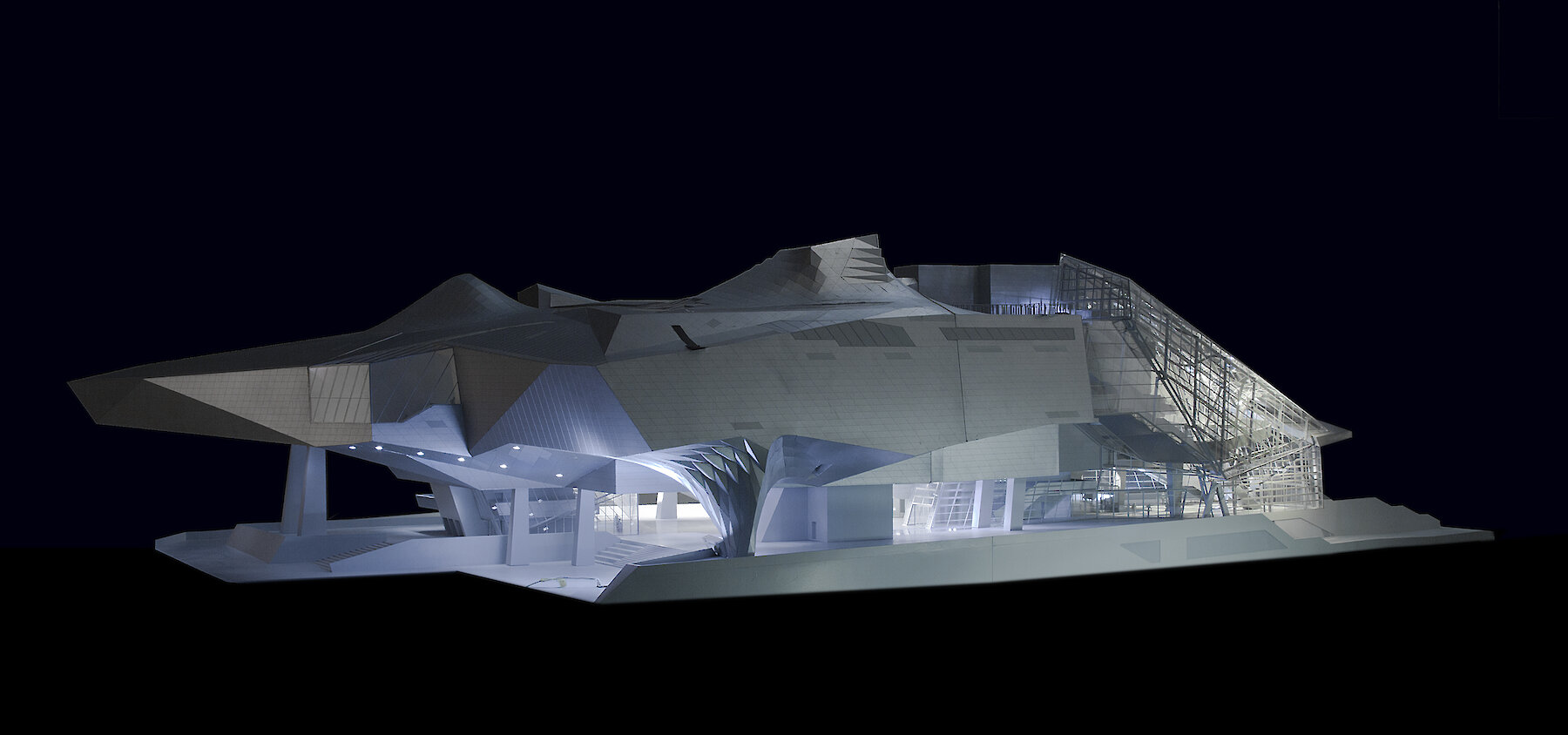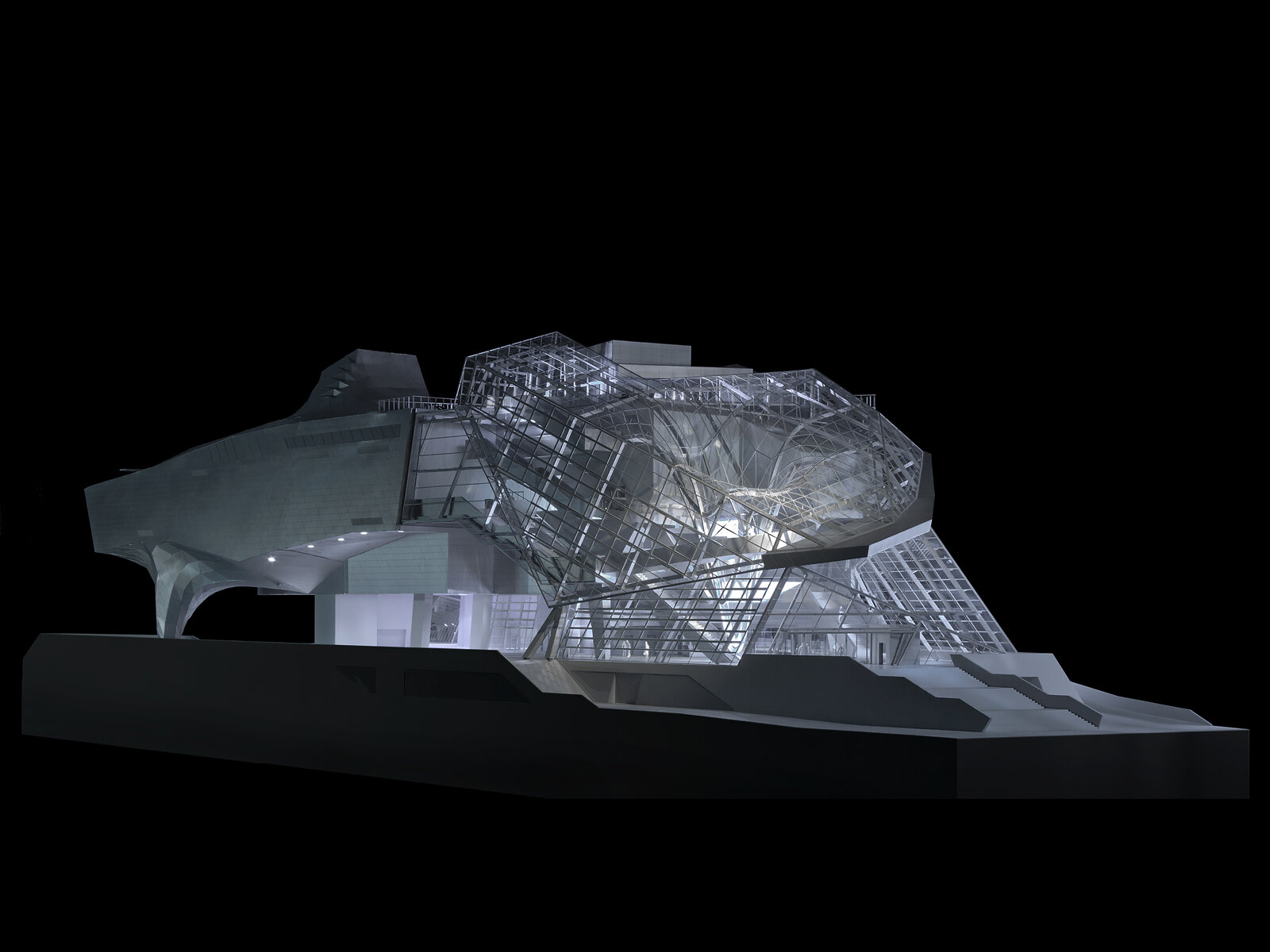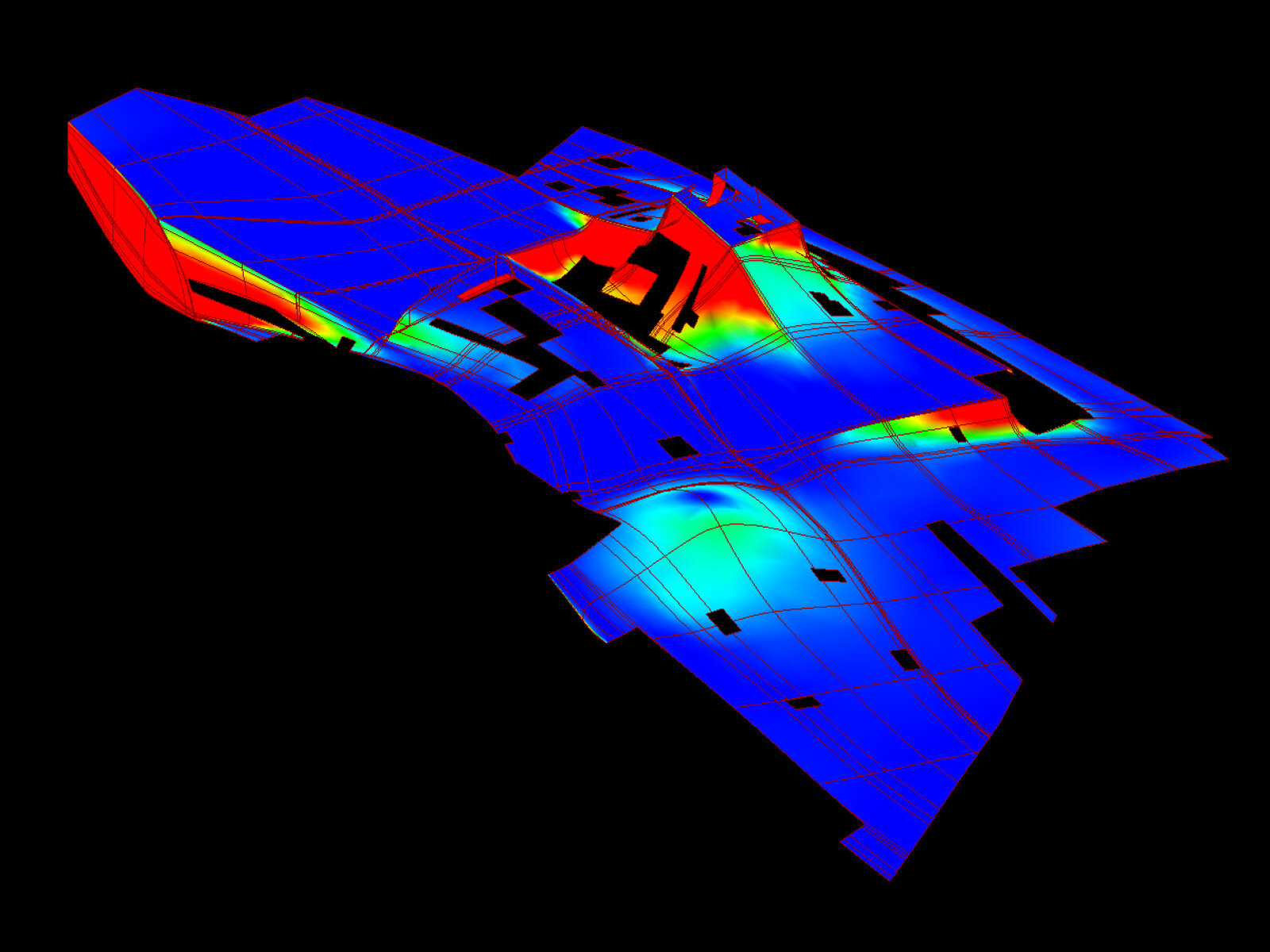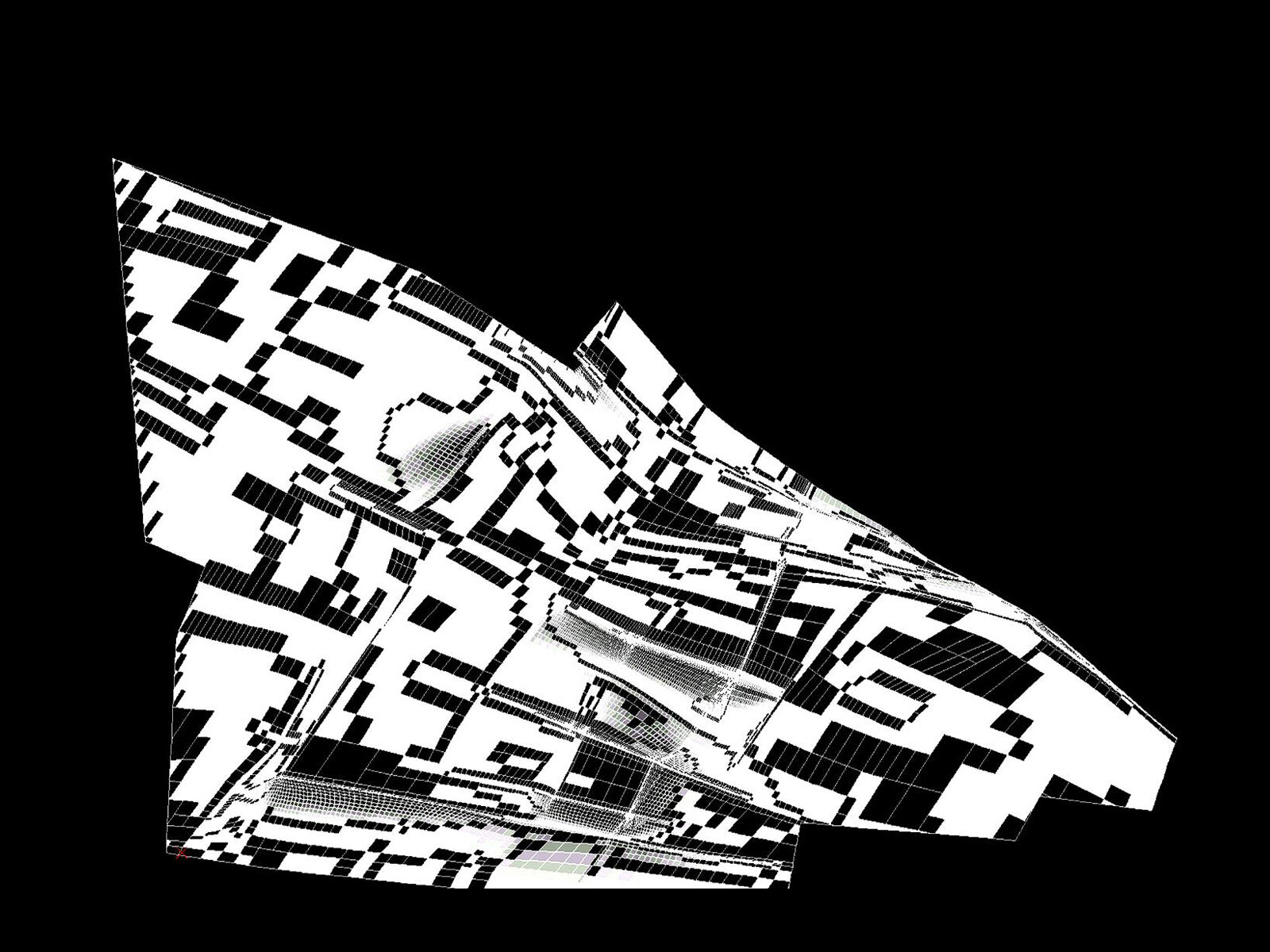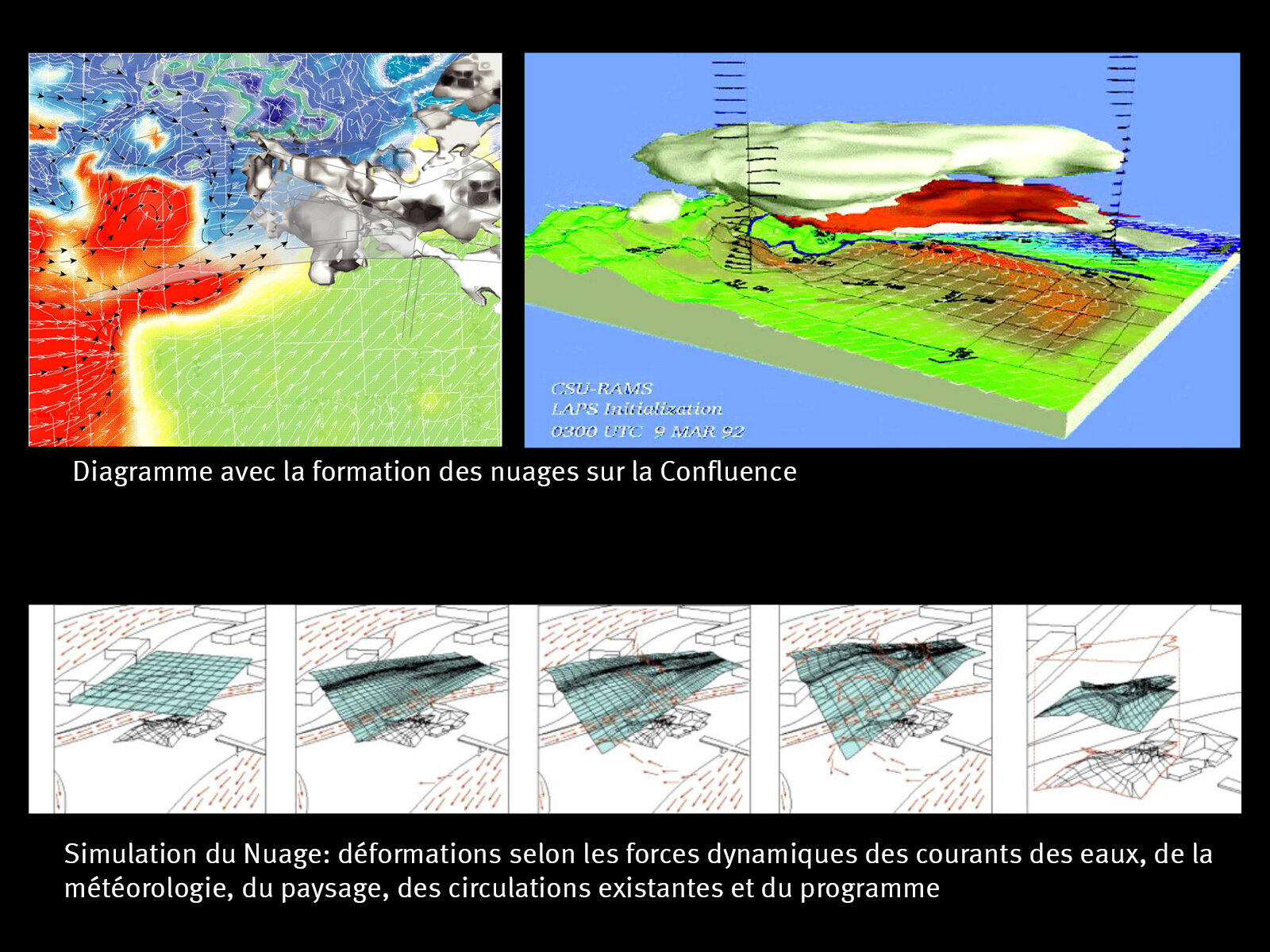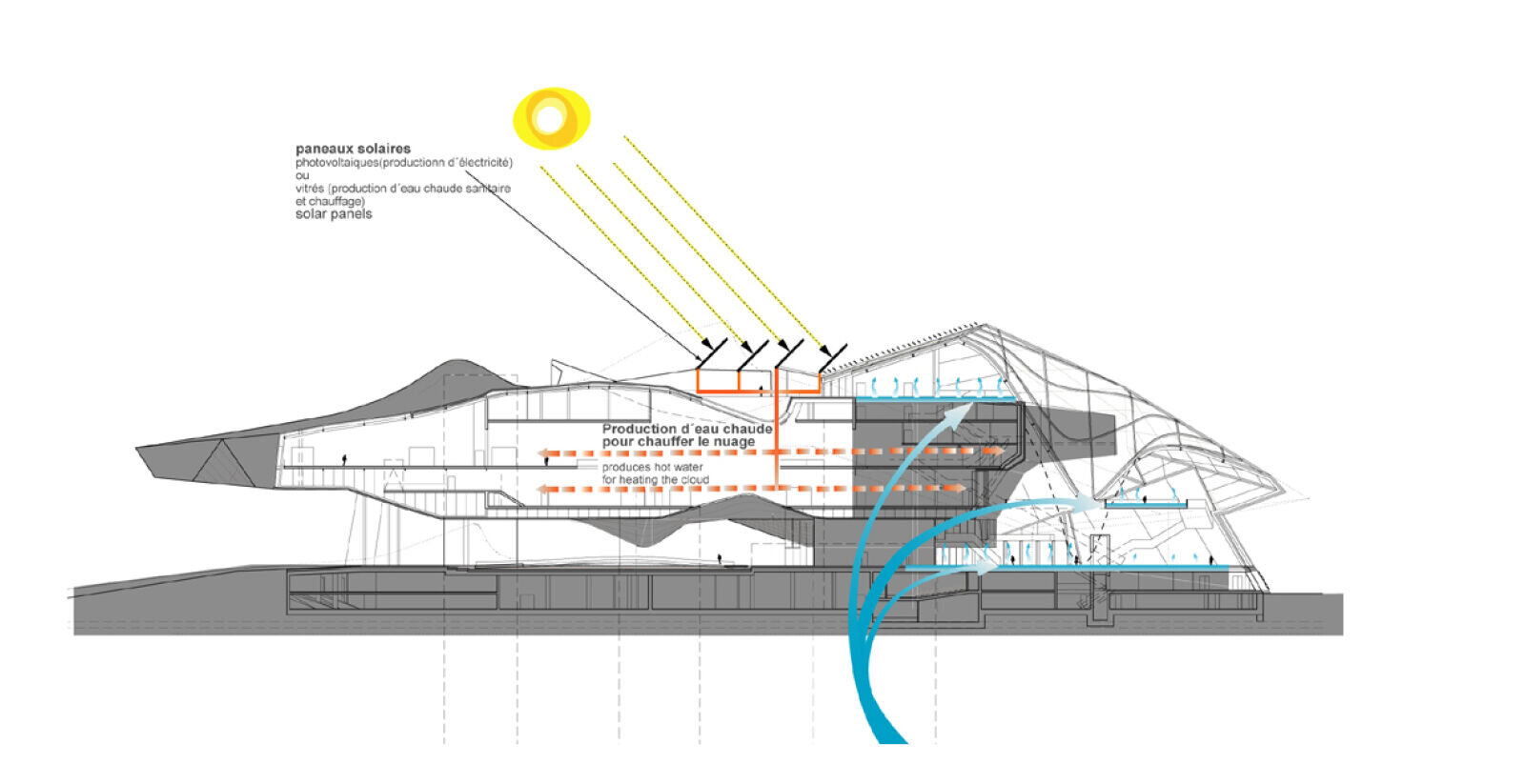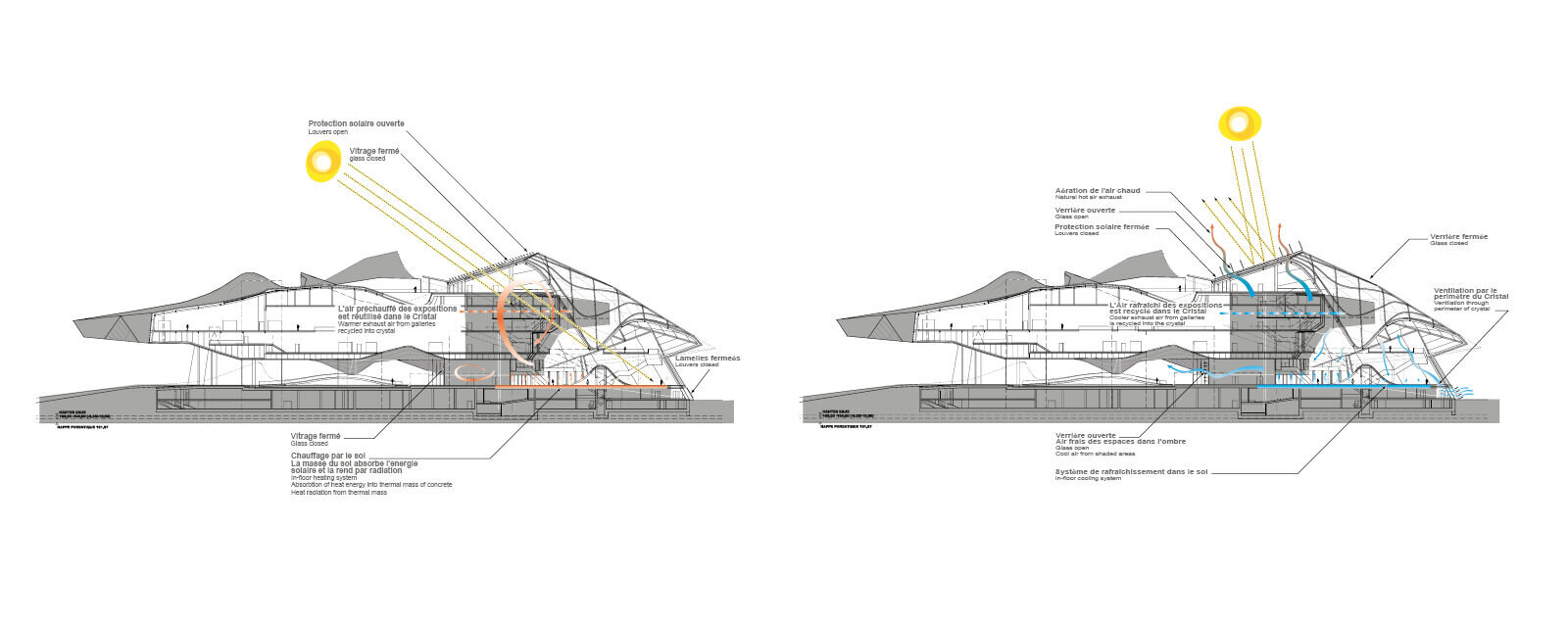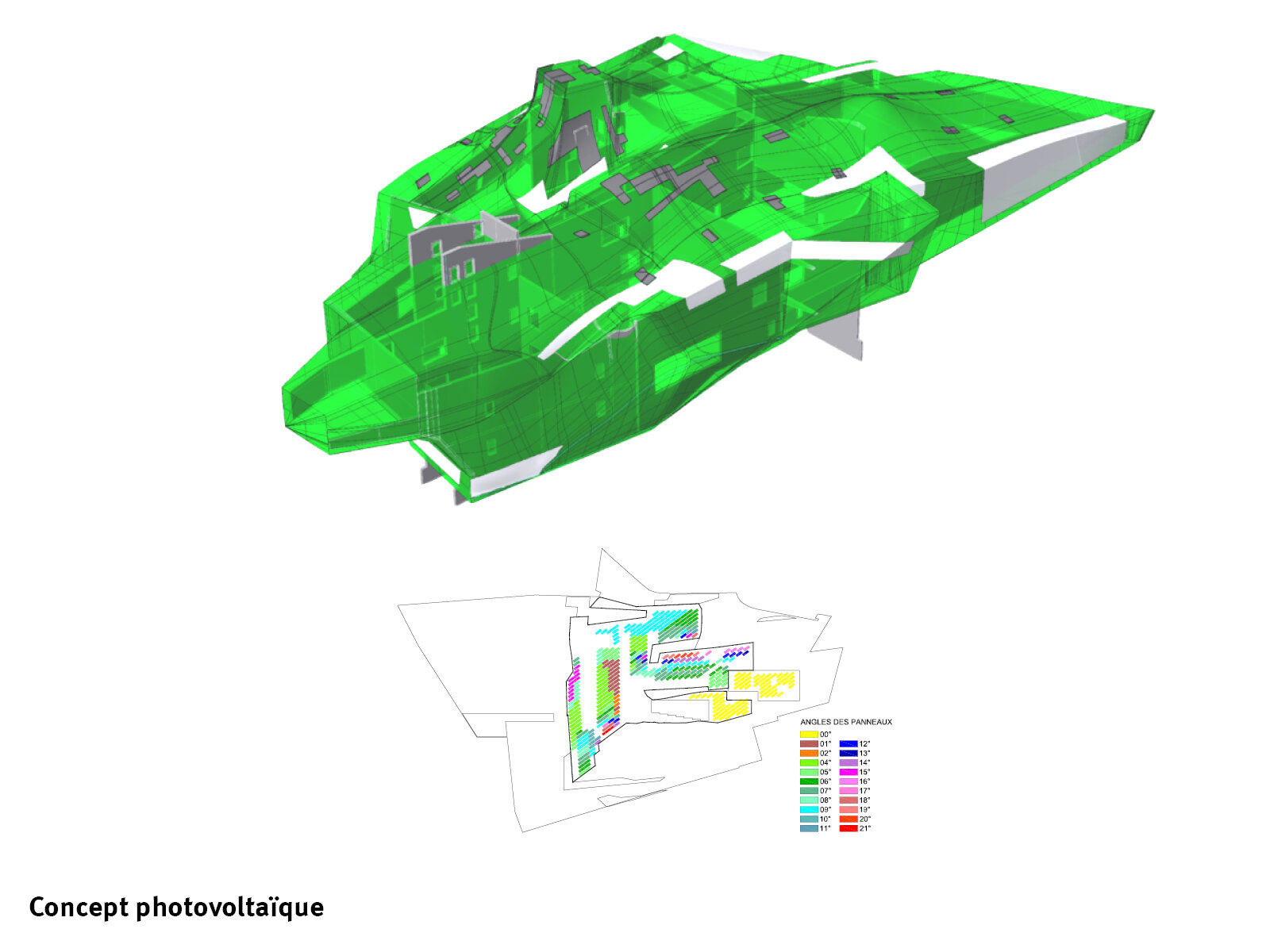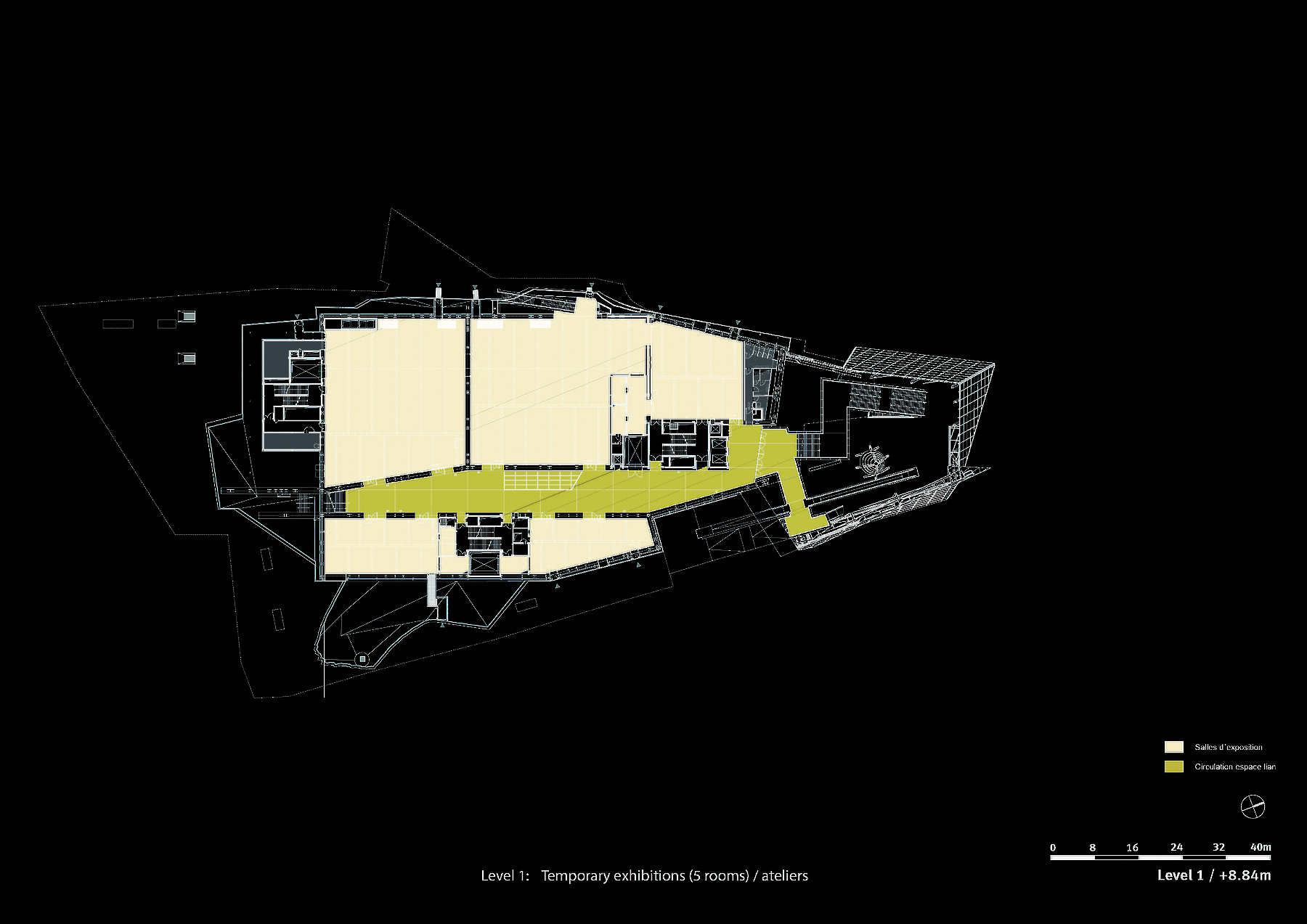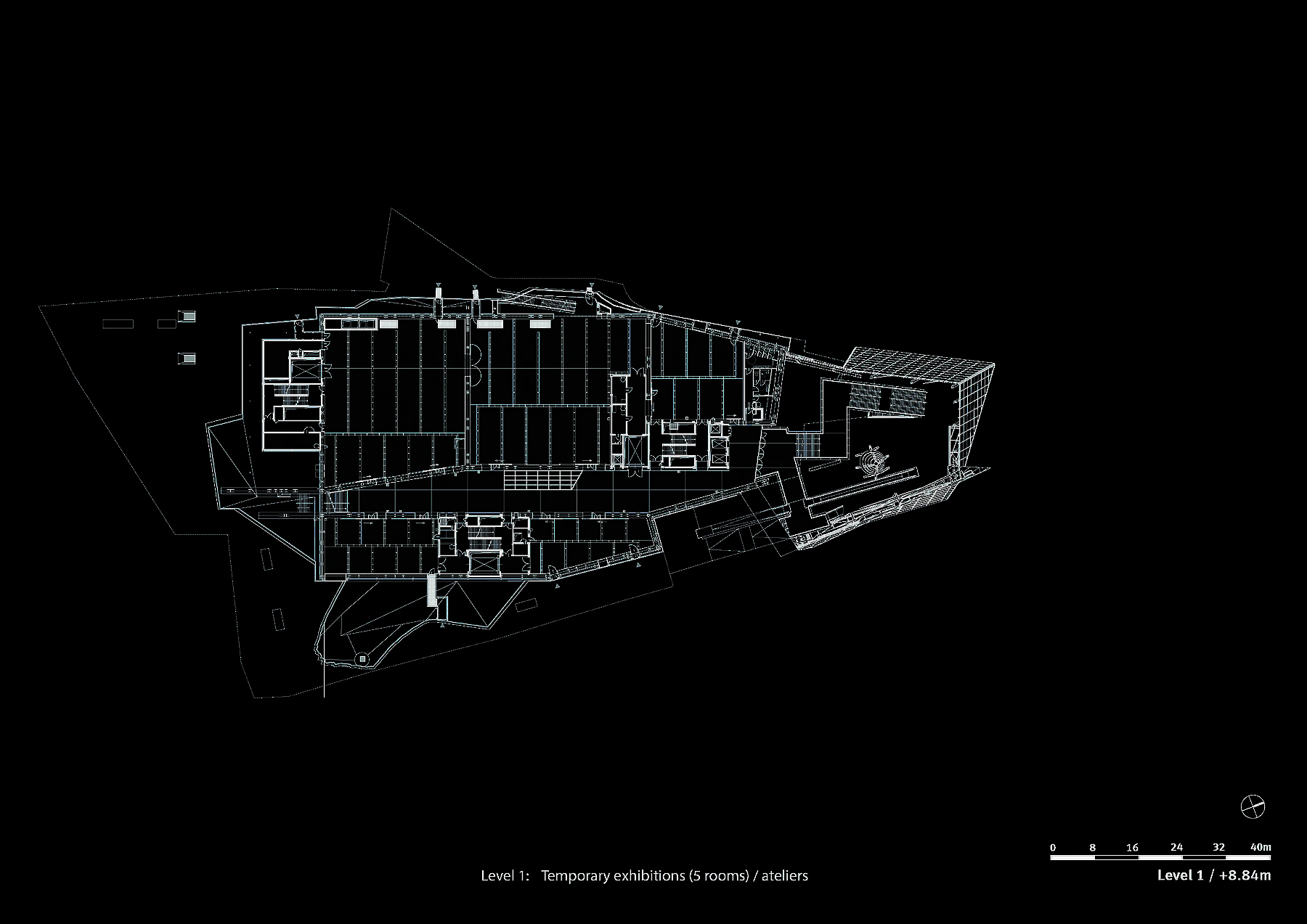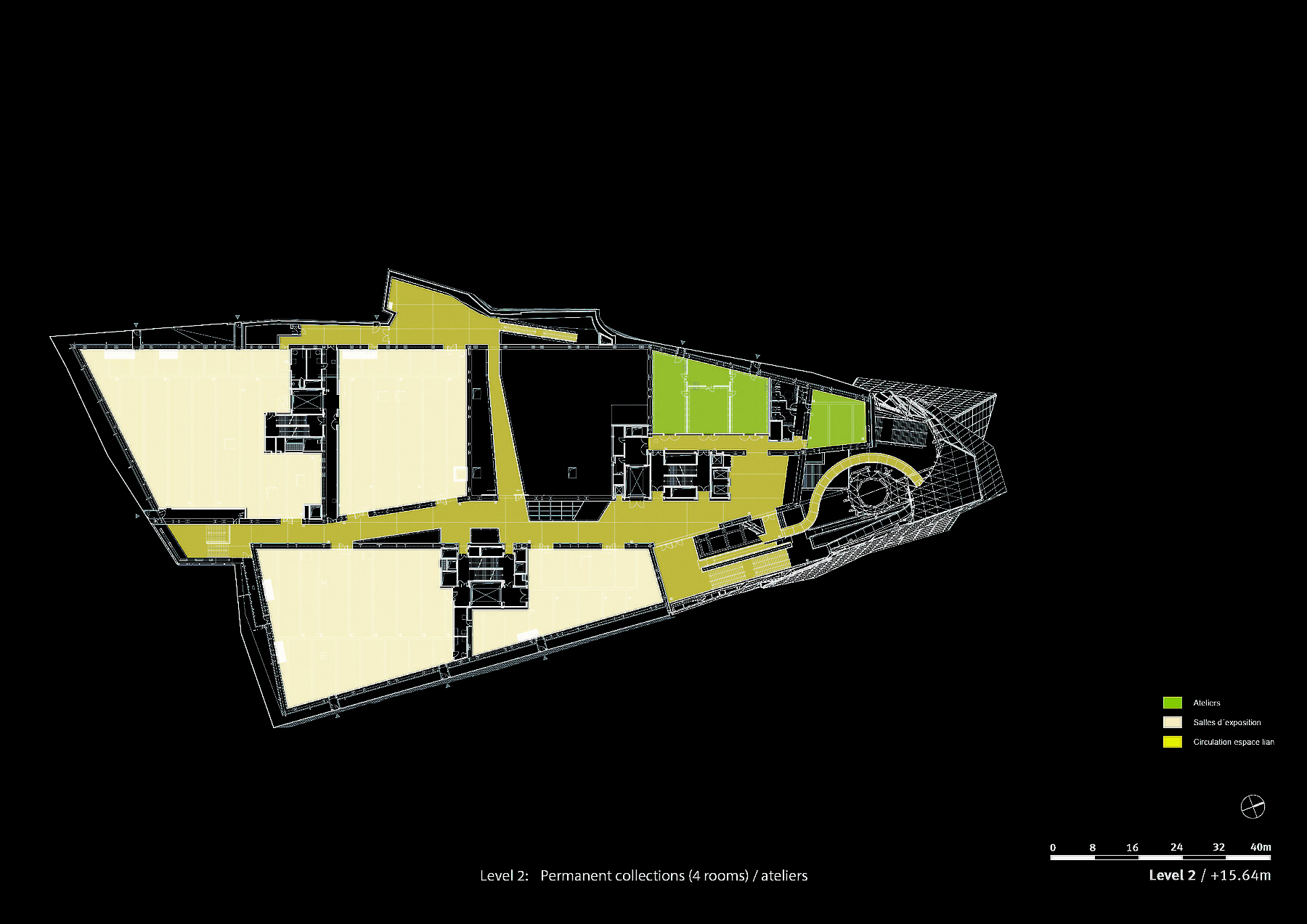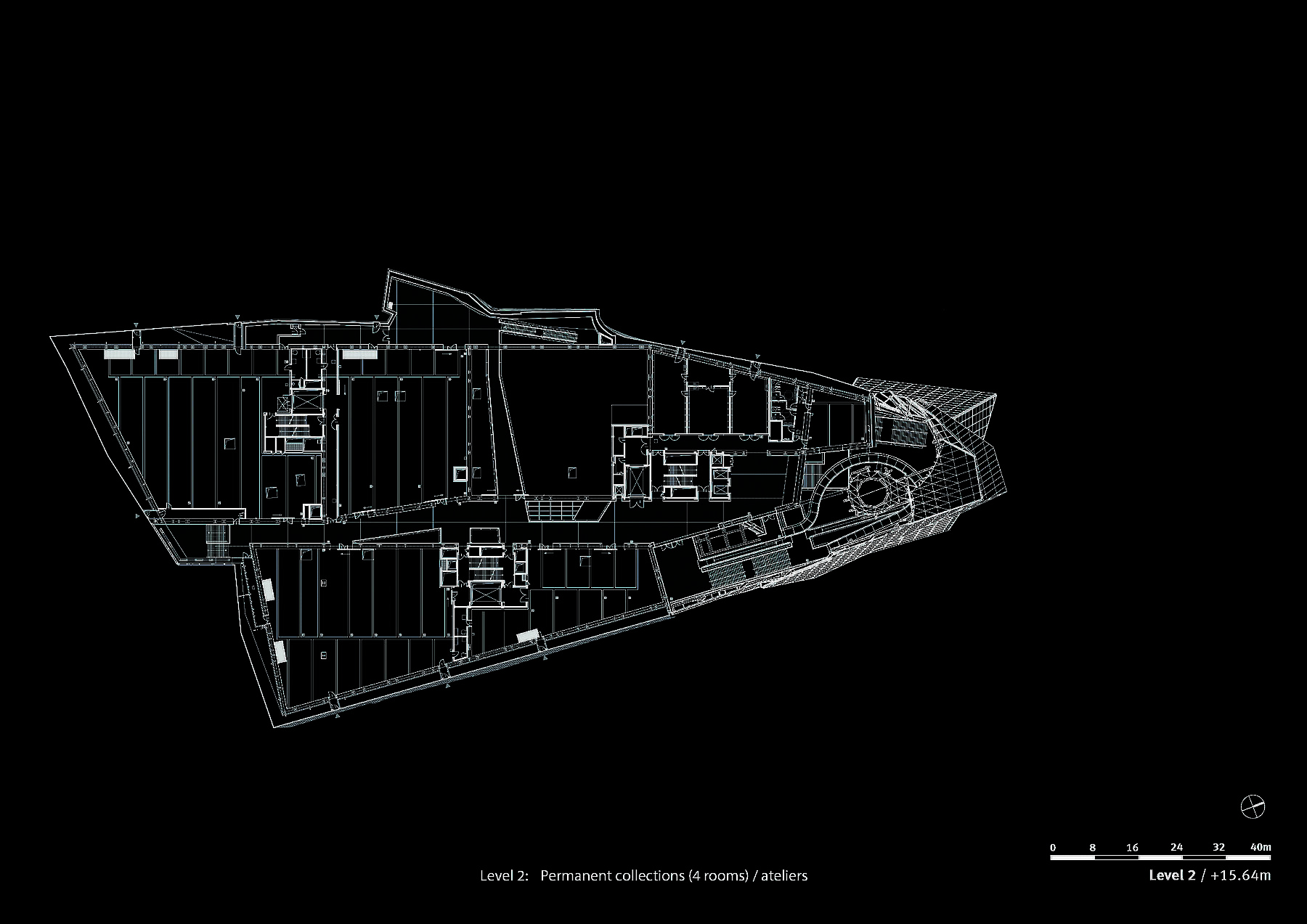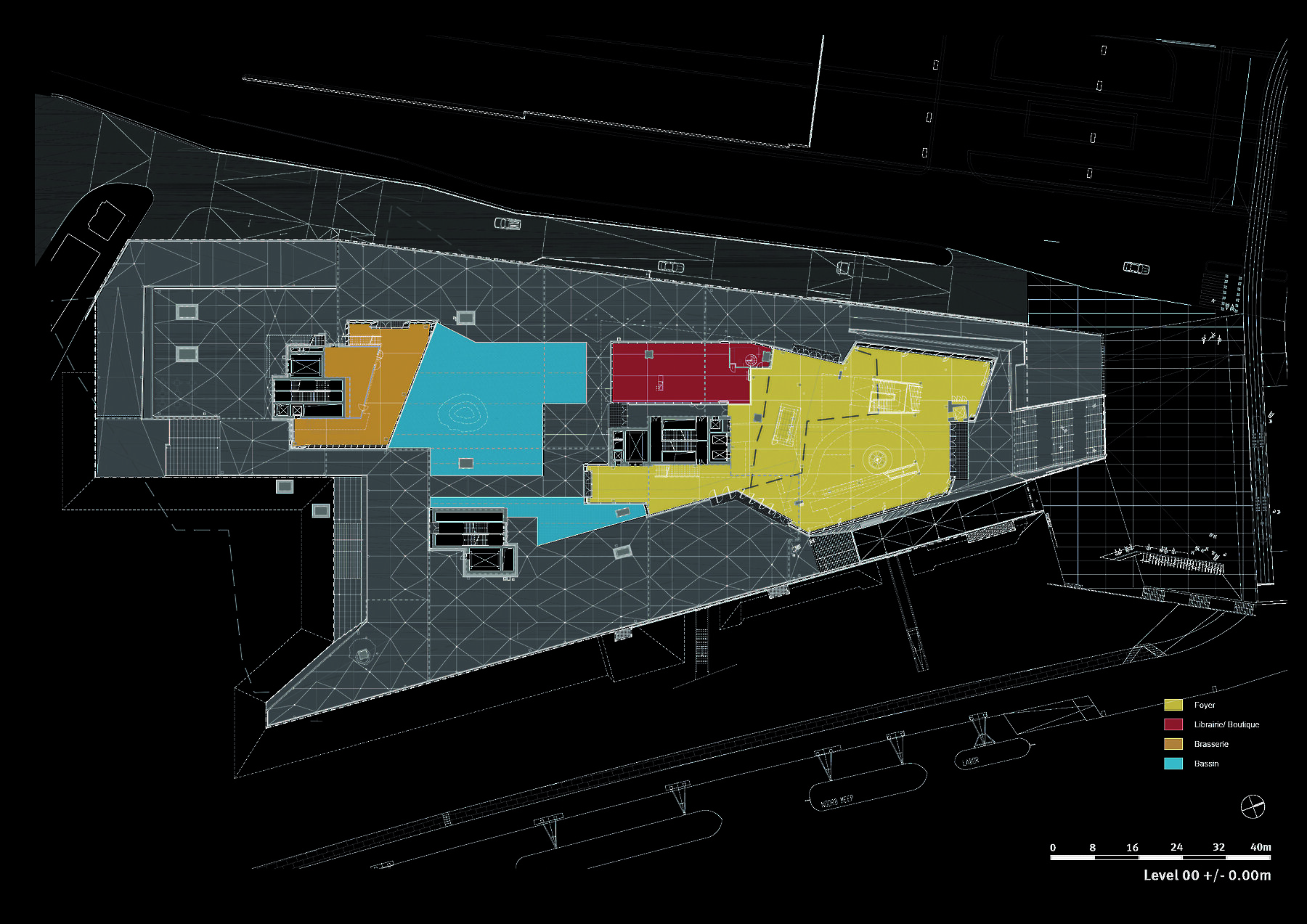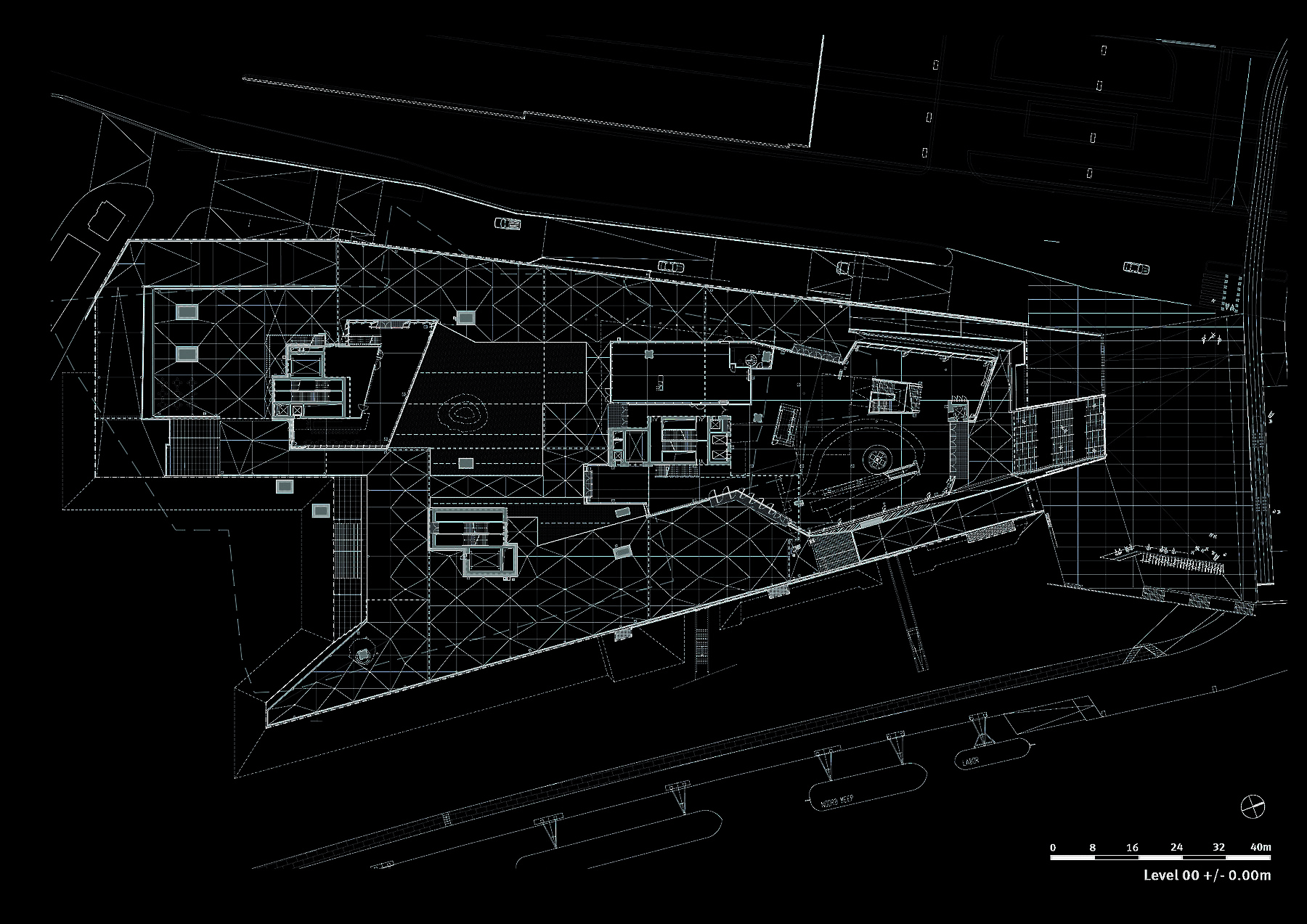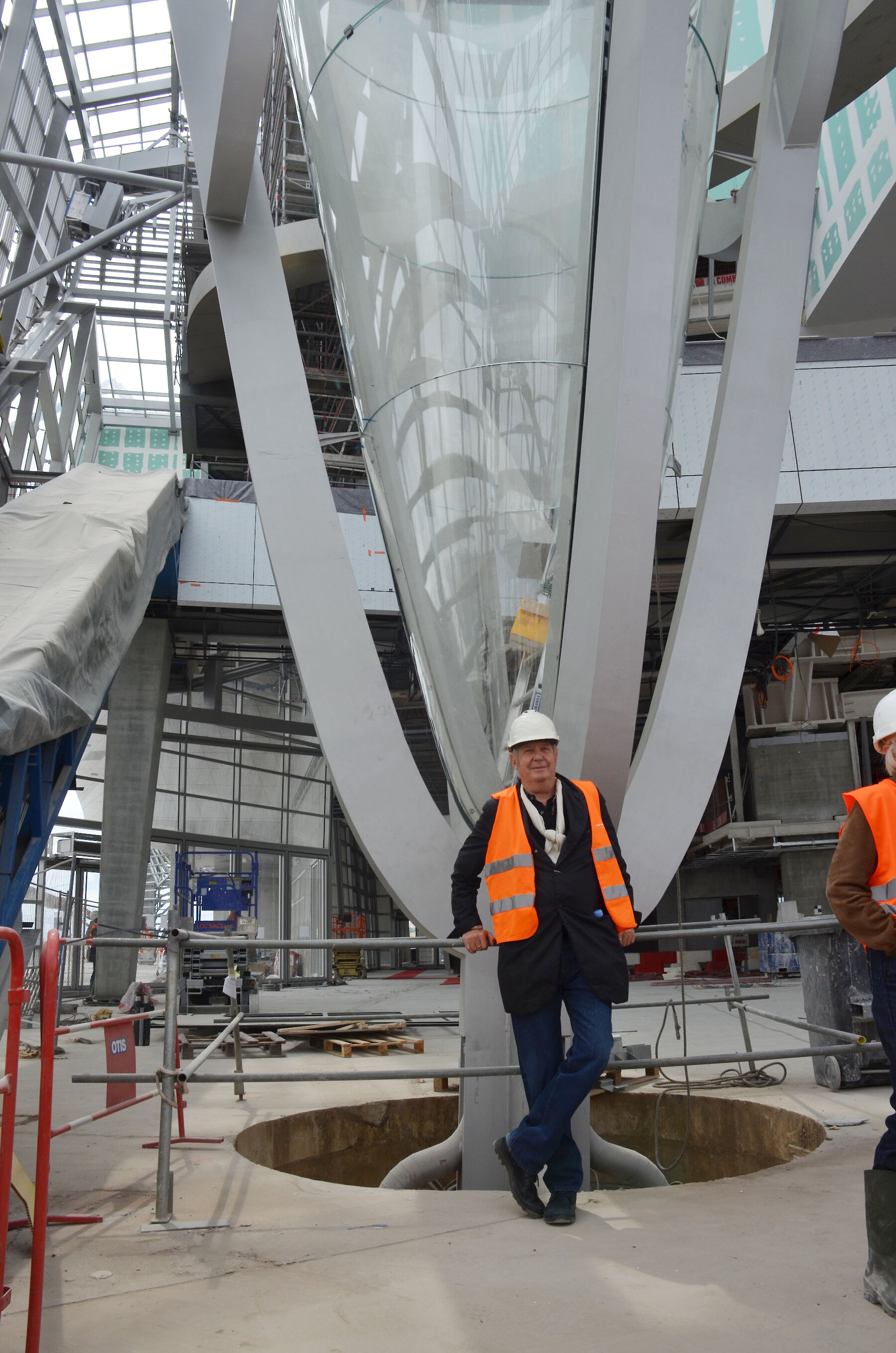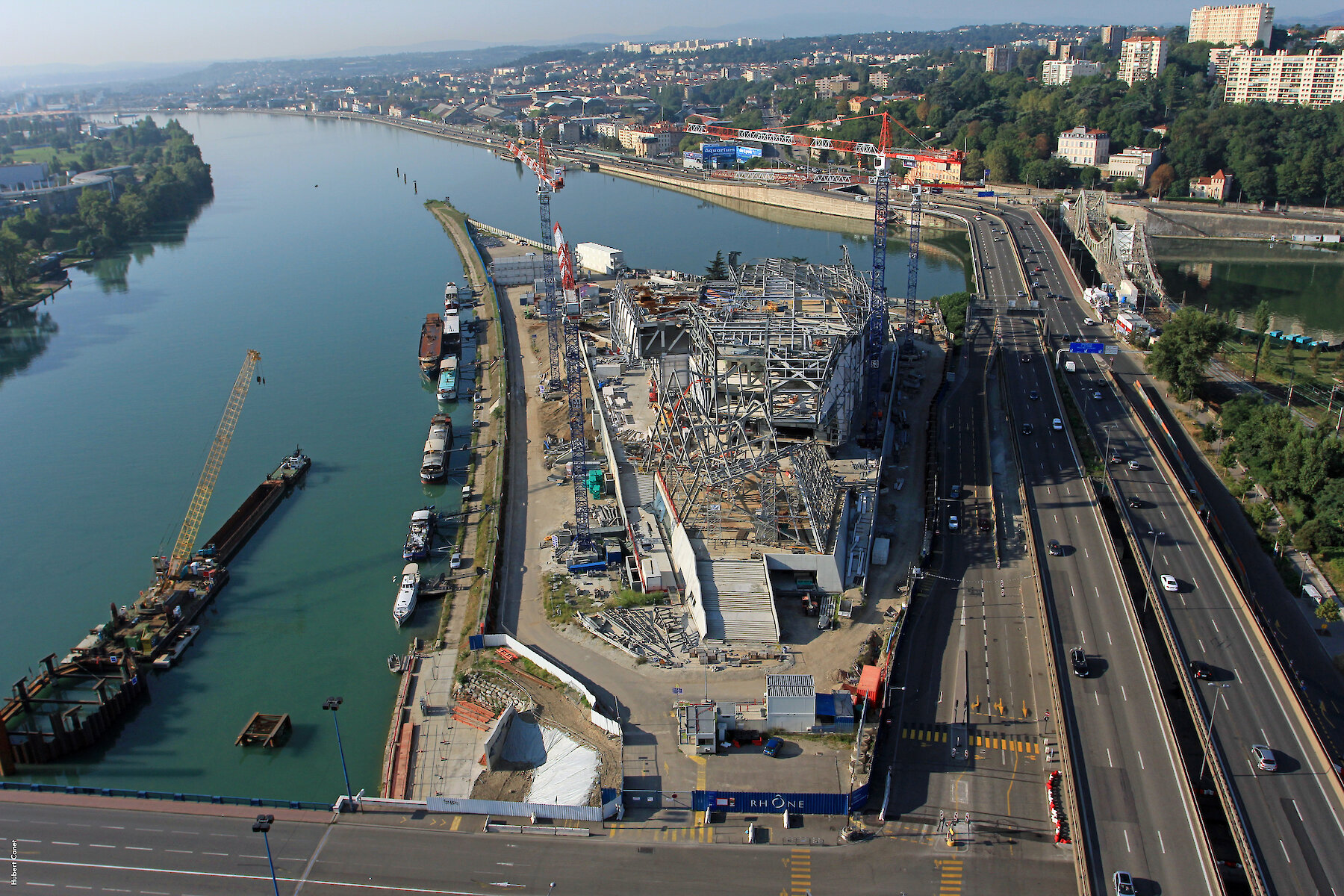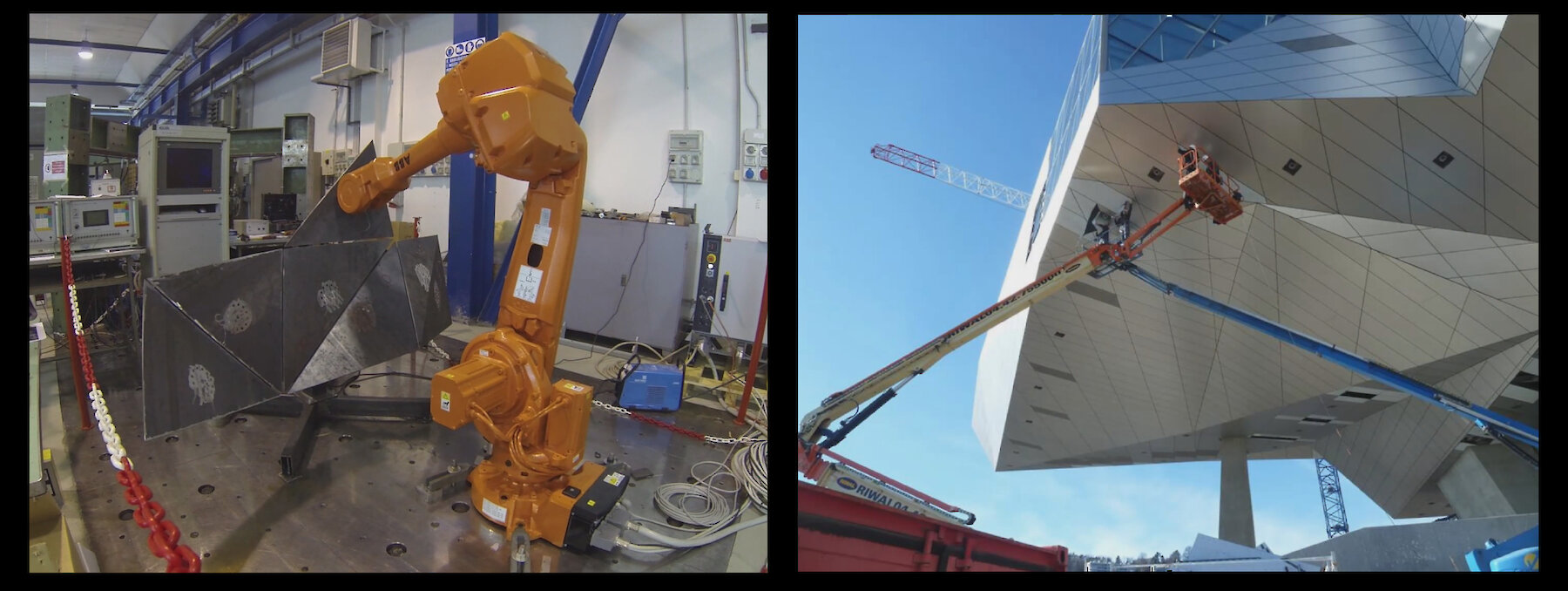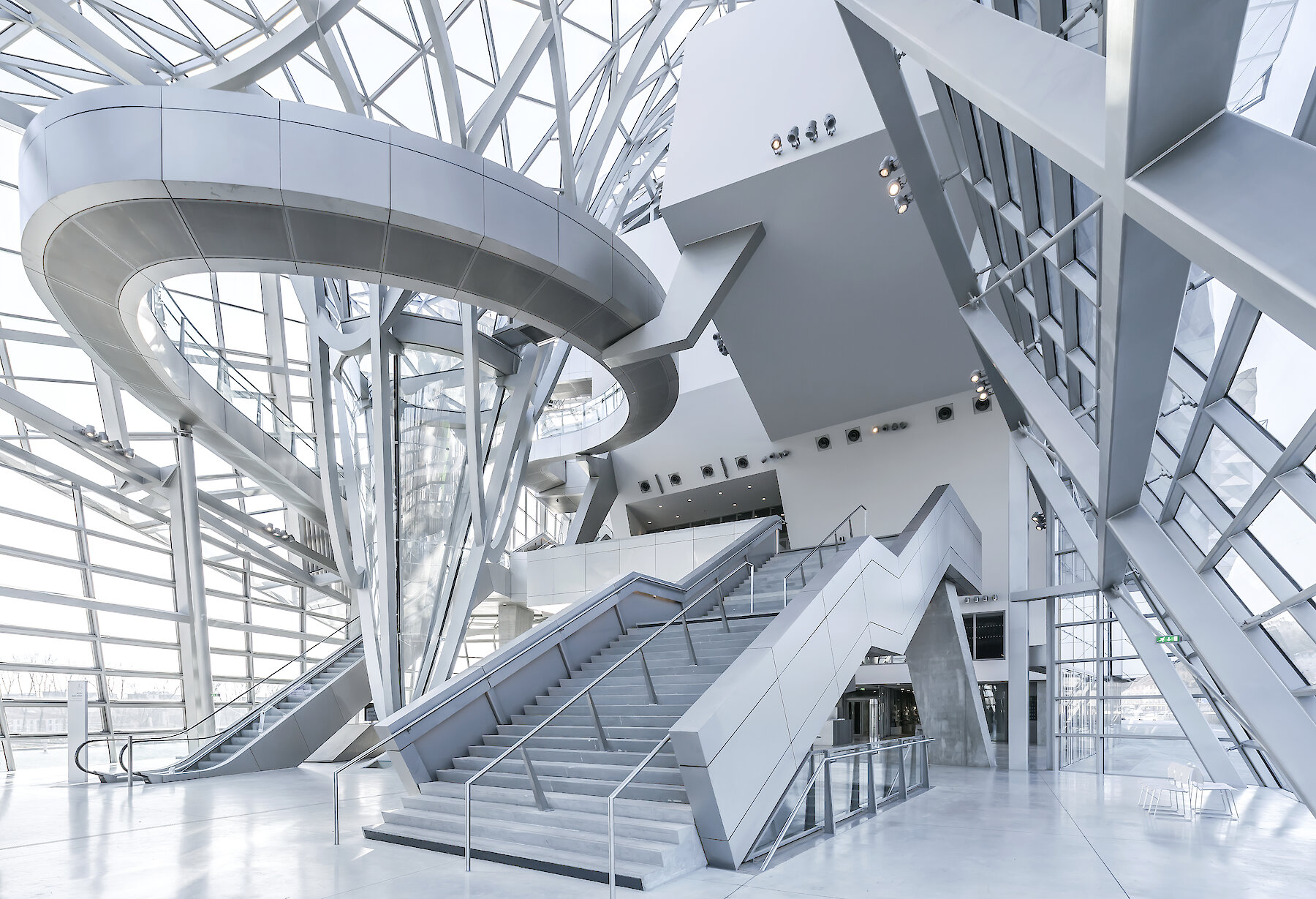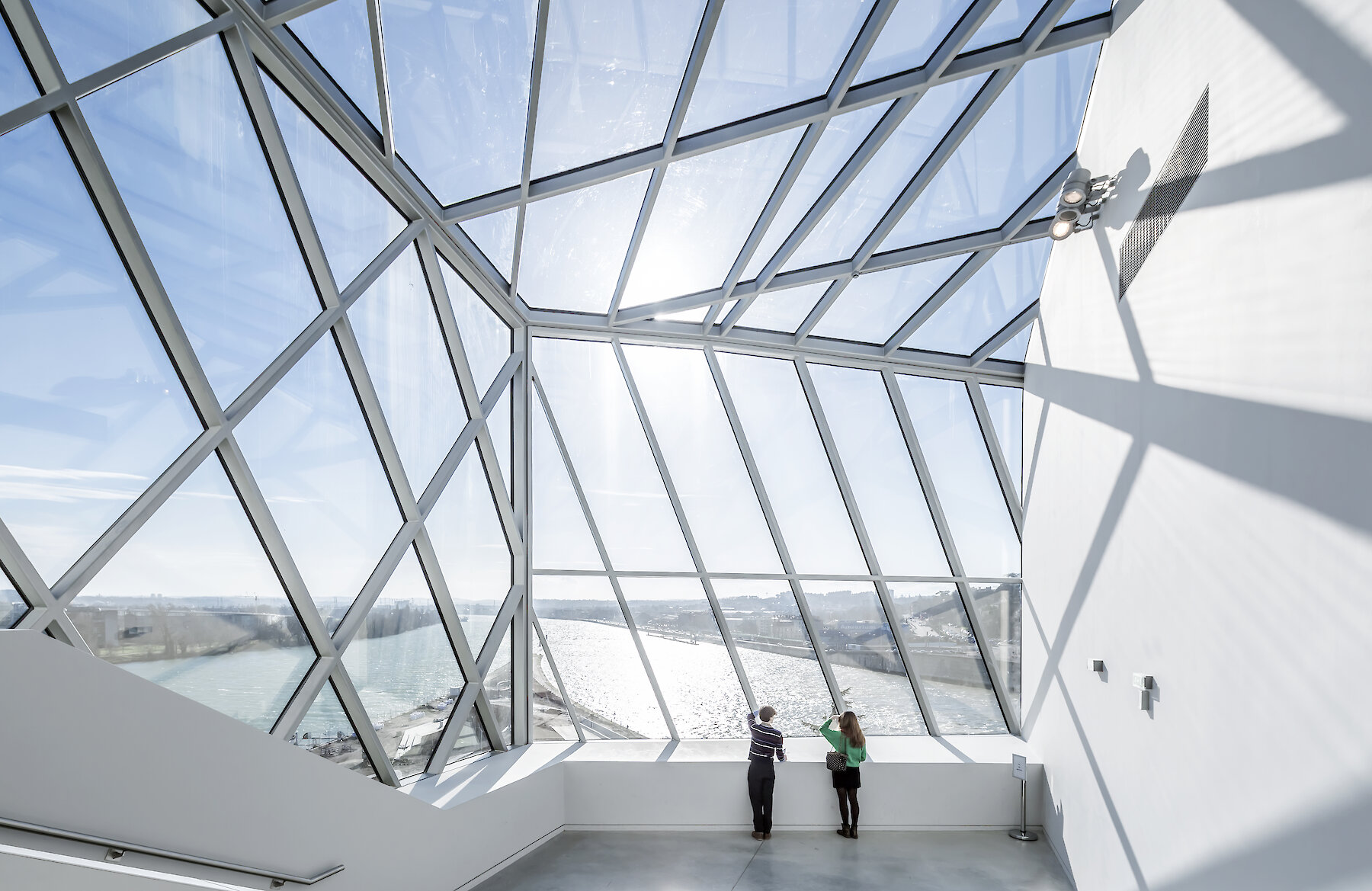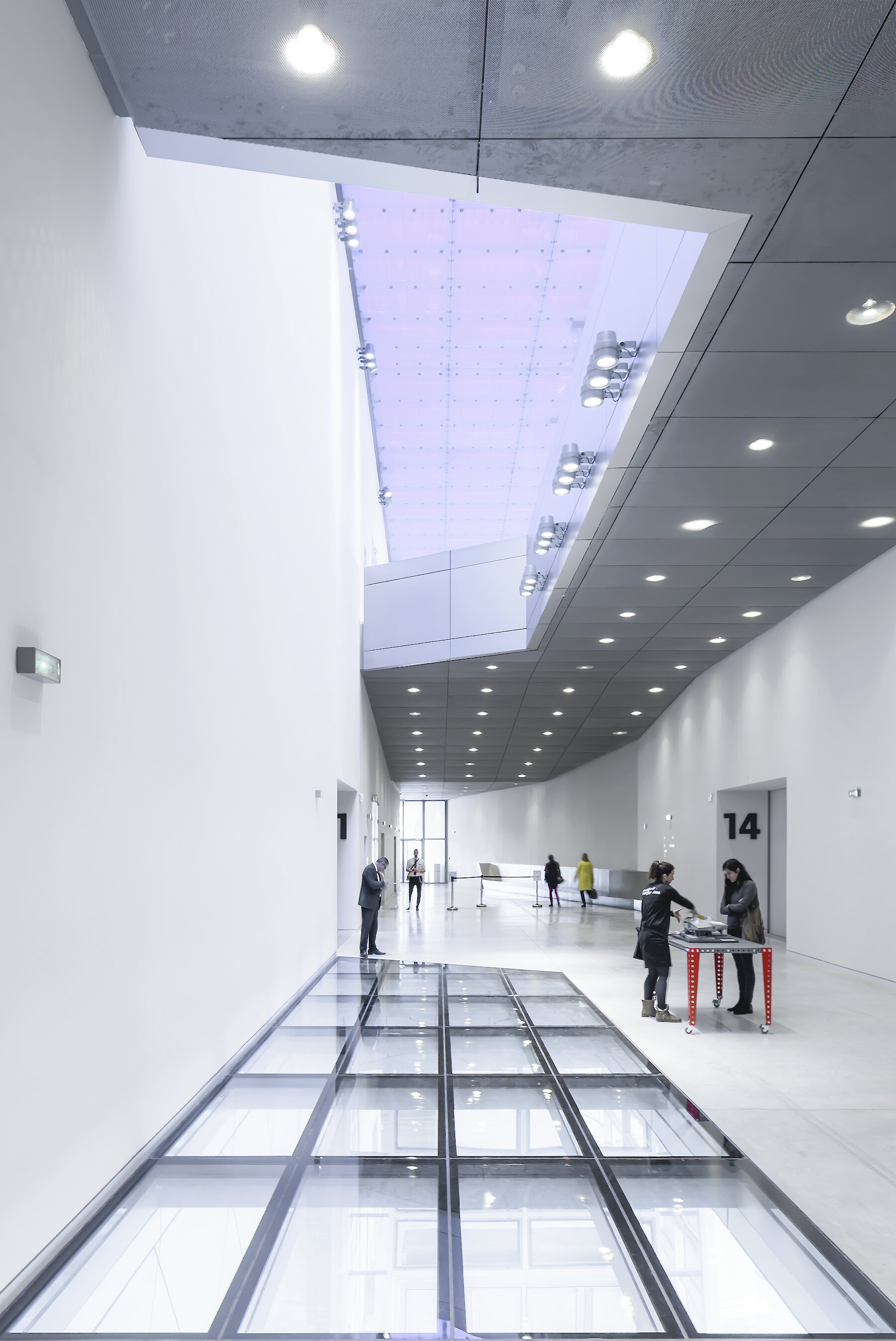Musée des Confluences
The Crystal Cloud of Knowledge
The Crystal Cloud of Knowledge
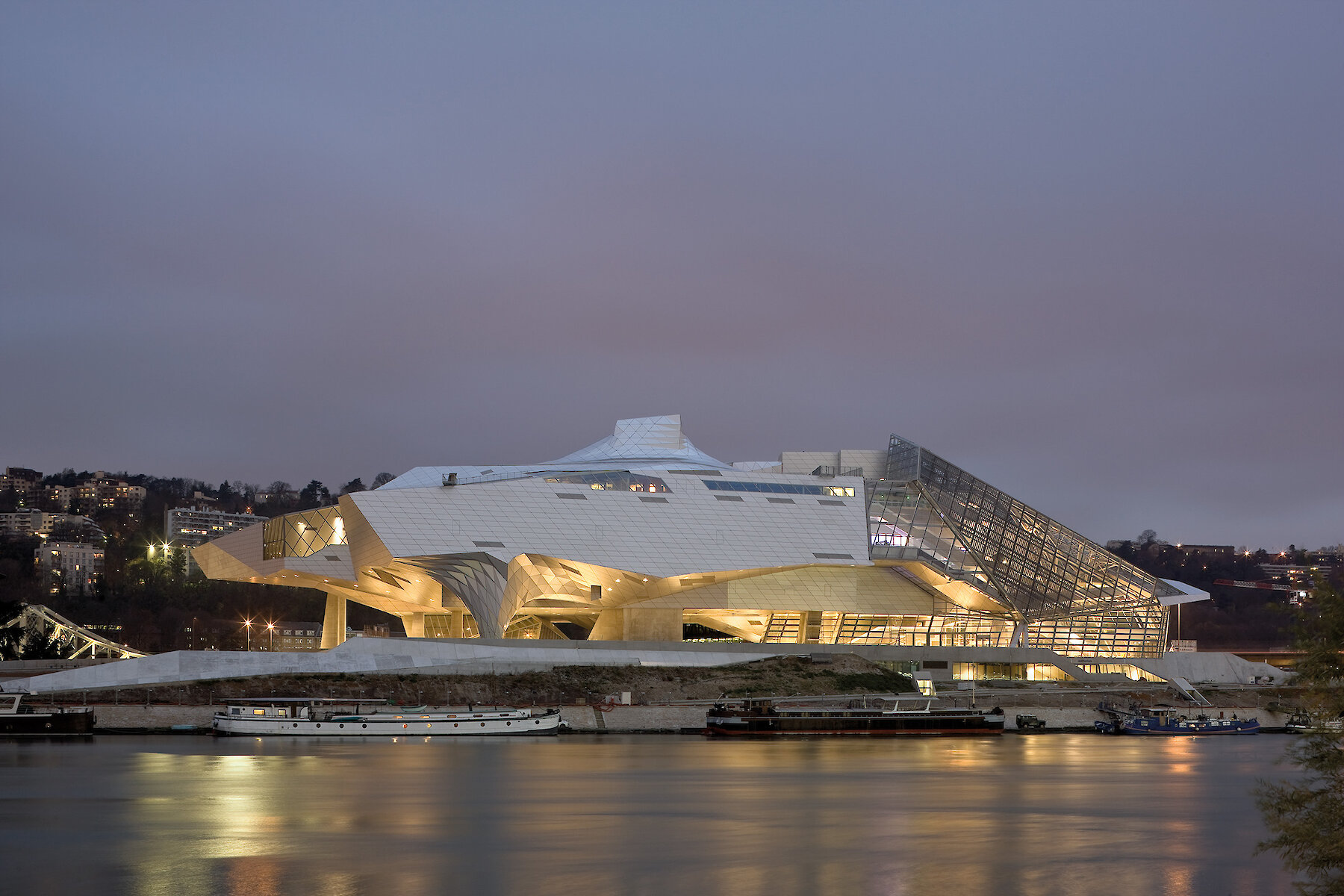
Questions regarding the future will be decided within transitional fields situated between technology, biology, and ethics which are the central themes of the Musée des Confluences.

Initial sketch for Musée des Confluences by Wolf dPrix
Coop Himmelb(l)au
Quote
It’s clear, readable forms stand for the world in which we move each day. The cloud, by contrast, holds the knowledge of the future. What is known and what is to be explored are understood in the Musée des Confluences is a spatial experimental design to stimulate public curiosity.
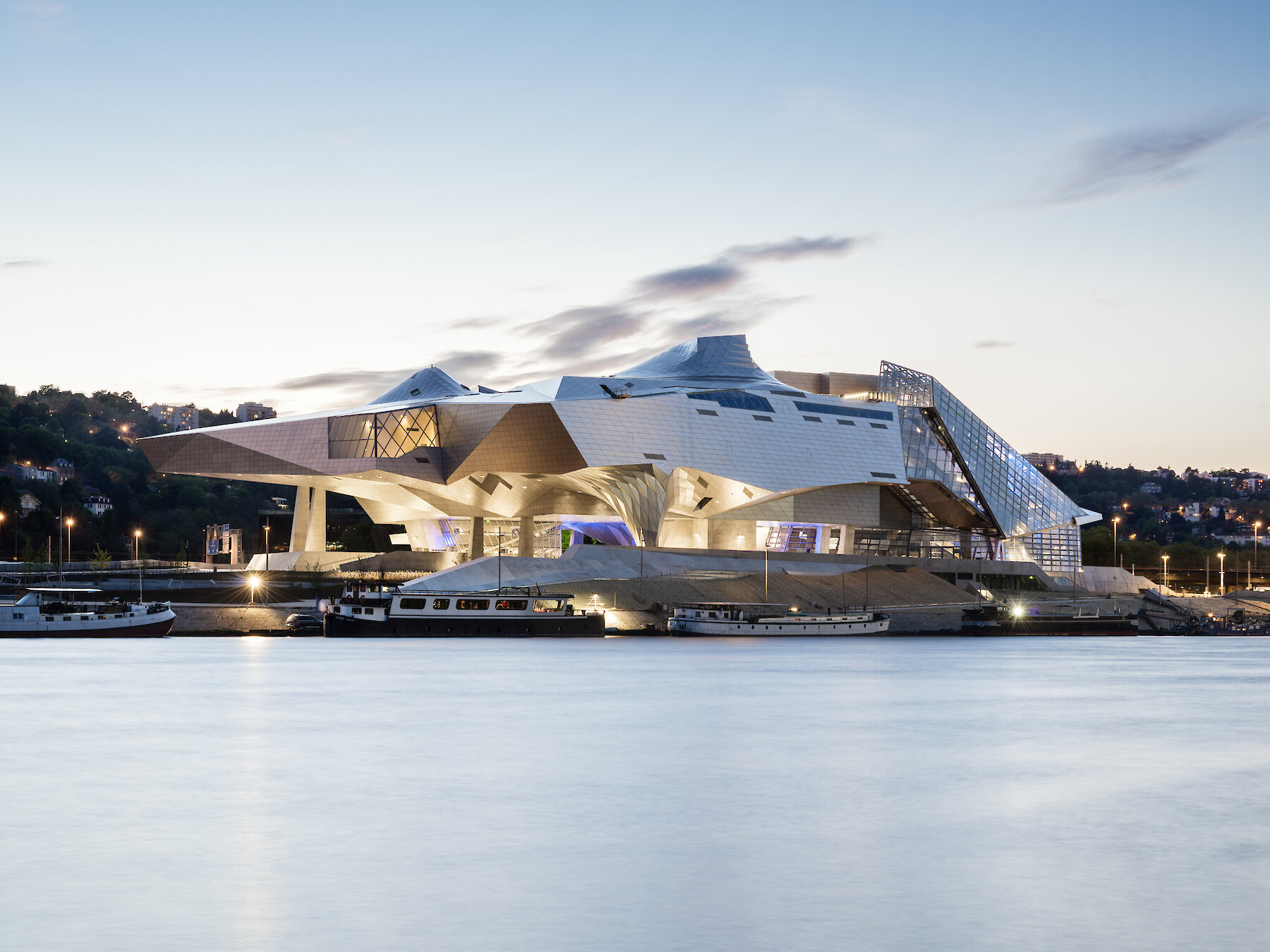
Raimund Koch

Sergio Pirrone
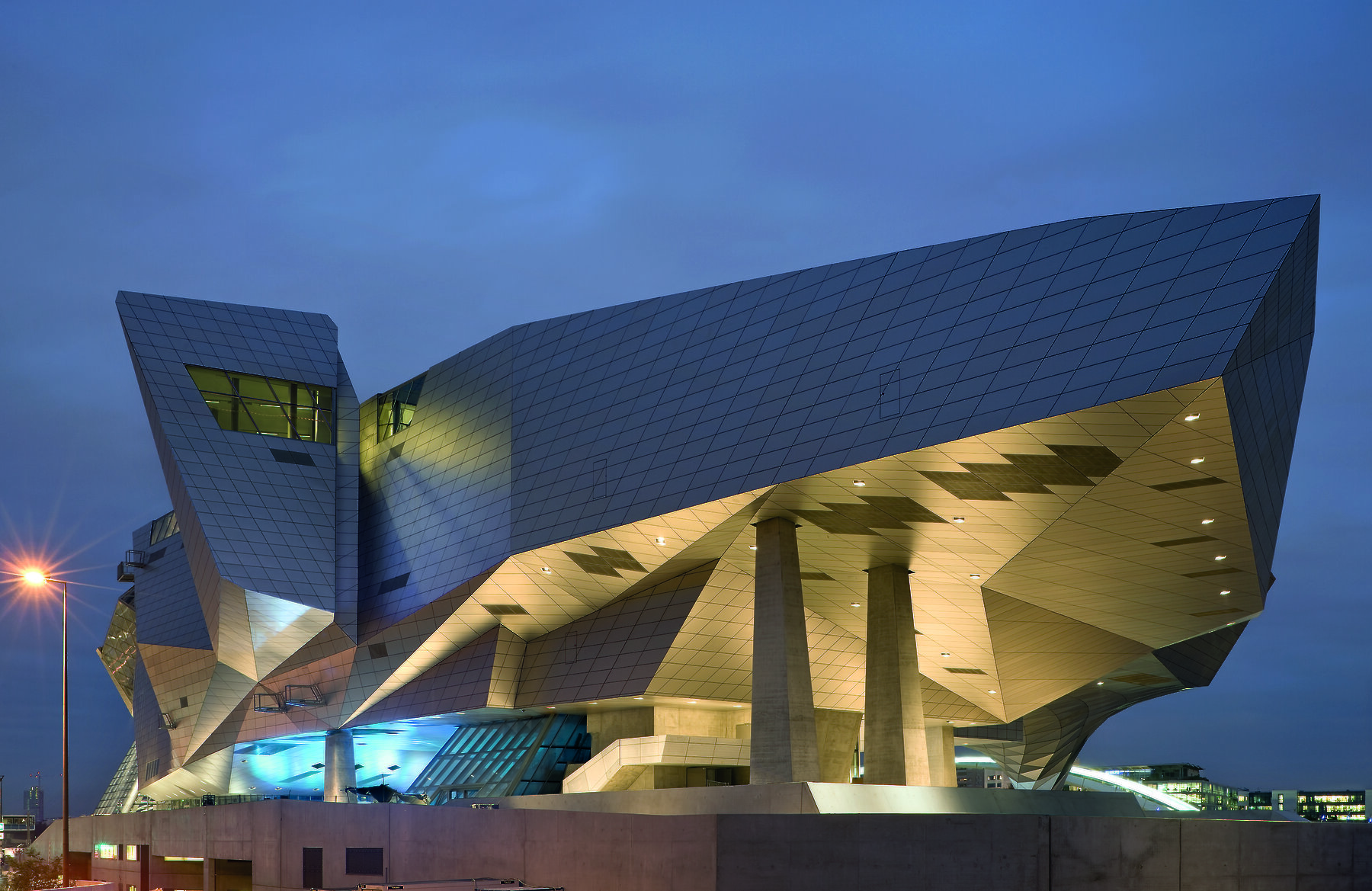
Duccio Malagamba
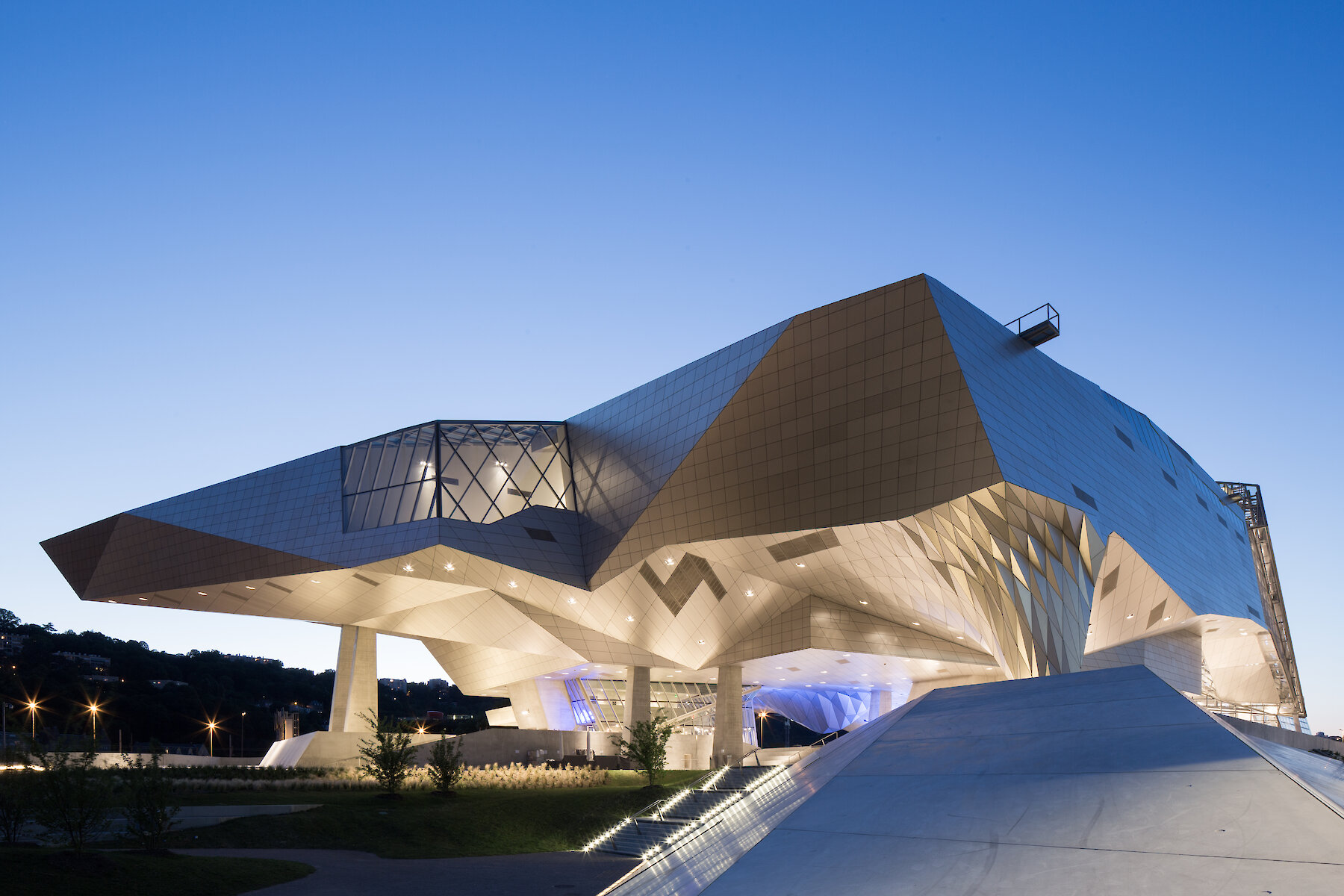
Christian Richters
Project info
Mutations of form, penetrations, deformations, simultaneities, breakdowns, and variabilities affect architecture. The resulting architecture is characterized by the interactions, fusion, and mutation of different entities constituting a new shape. The building ground of the museum is located on a peninsula that was artificially extended 100 years ago. Even though it was apparent that this site would be a difficult one (536 piles had to be securely driven 30 meters into the ground), it was clear that this location would be very important for urban design. The building should serve as a distinctive beacon and entrance for the visitors approaching from the South, as well as a starting point for urban development.
The striking interface situation of the construction site at the eponymous confluence of the Rhône and the Saône inspired the superposition in the urban space of two complexly linked architectural units, crystal, and cloud. The cloud structure, floating on pillars, contains a spatial sequence of black boxes— admitting no daylight, to achieve maximum flexibility for exhibition design.
The Musée des Confluences does not consider itself as an exclusive “Temple of the Muses” for the intellectual bourgeoisie but as a public place providing access to the knowledge of our age.
To build a museum of knowledge, a complex new form had to be developed as an iconic gateway. A building that truly stands out can only come into being through shapes resulting from new geometries. It was important to the concept that the flow of visitors arriving from the city to the Pointe du Confluent should not be impeded by a building. The idea was therefore to develop an openly traversable building that would be floating in part only on supports, to create a public space underneath.
The architecture hybridizes the typology of a museum with the typology of urban leisure space. The concept of two complexly connected architectural units is a result of the striking interface-like situation of the building site. The crystal rising towards the side of the town is conceived as an urban forum and entrance hall for visitors. Its shape that can be read clearly stands for the everyday world. In contrast to this, the cloud hides the knowledge about the future; it is a soft space of hidden streams and countless transitions.
Within the Musée des Confluences the present and the future, the known and the still unknown are conceived as a spatial arrangement trying to “spur public curiosity”. As an extension of the park located on the Southern tip of the island a new urban space formulates itself; a landscape consisting of ramps and surfaces merging the inside and the outside and resulting in a dynamic sequence of spatial events. This movement is also followed by the alternating spatial structure of the exhibition halls. Closed black boxes and free exhibition areas alternate by exploiting the double room height of two levels.
Essentially, the building consists of three parts. Situated on a slightly raised base (due to the high groundwater) that houses the production workshops, the auditoriums, and the group visit reception area, crystal — foyer, and cloud – exhibition area.
Environmental concept
The foyer (crystal) is a naturally ventilated space. The supply air enters via glazed ventilation flaps inside the east facade while the exhaust air exits via the roof area. It is, therefore, unnecessary to use a traditional air conditioning system. Only the main access areas and workspaces are microclimatic units whose comfort is ensured through local heating and cooling systems. The floors are cooled via groundwater. This will result in significant energy savings for the museum’s foyer in the long term.
In terms of thermal insulation, the facades of the exhibition area (cloud) are characterized by an extremely efficient building shell. All of the main access areas are illuminated naturally (not much artificial light); the water supply of the sanitation areas is provided through the groundwater. A photovoltaic system is installed on the roof.
Project insights

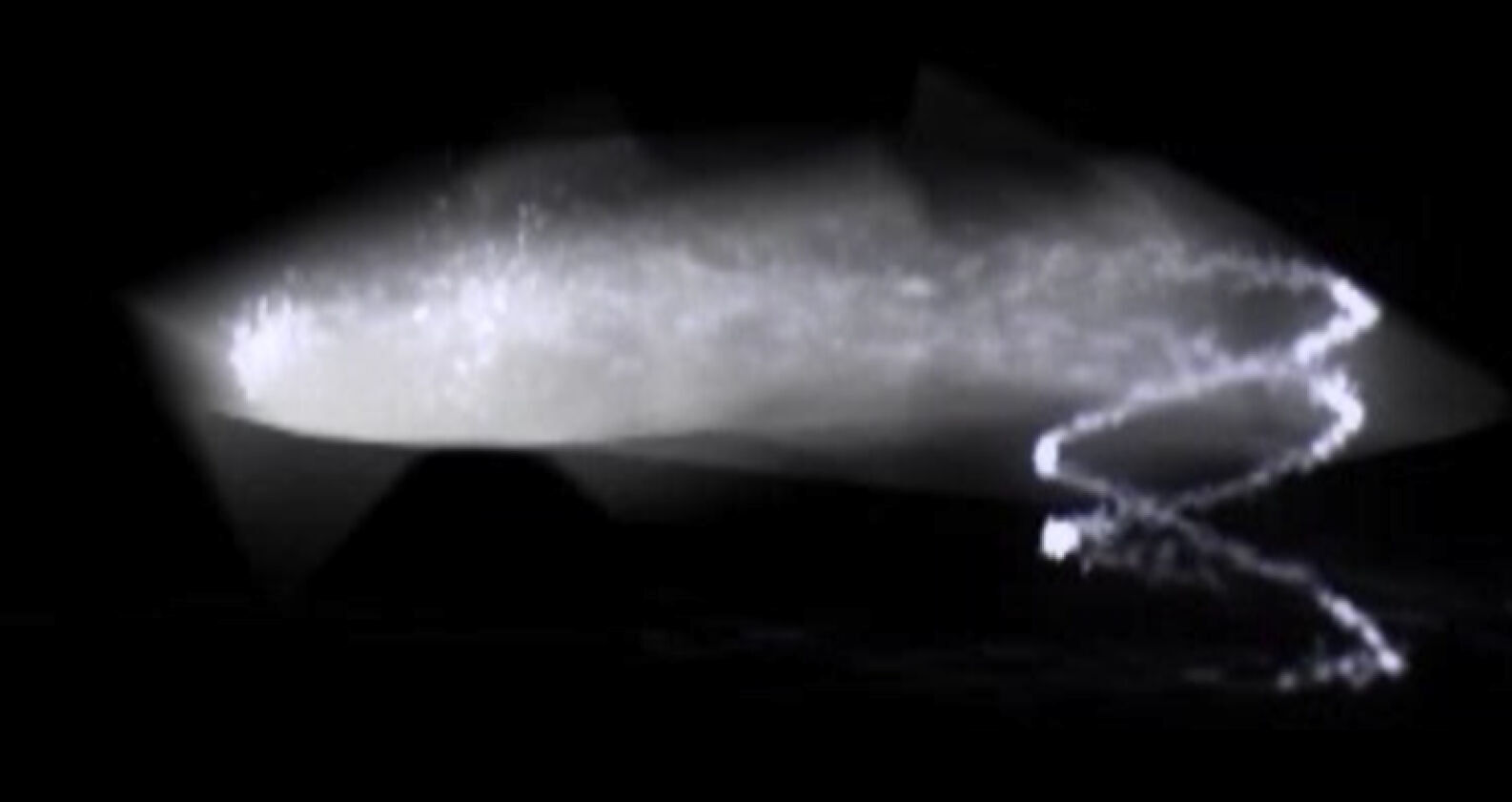
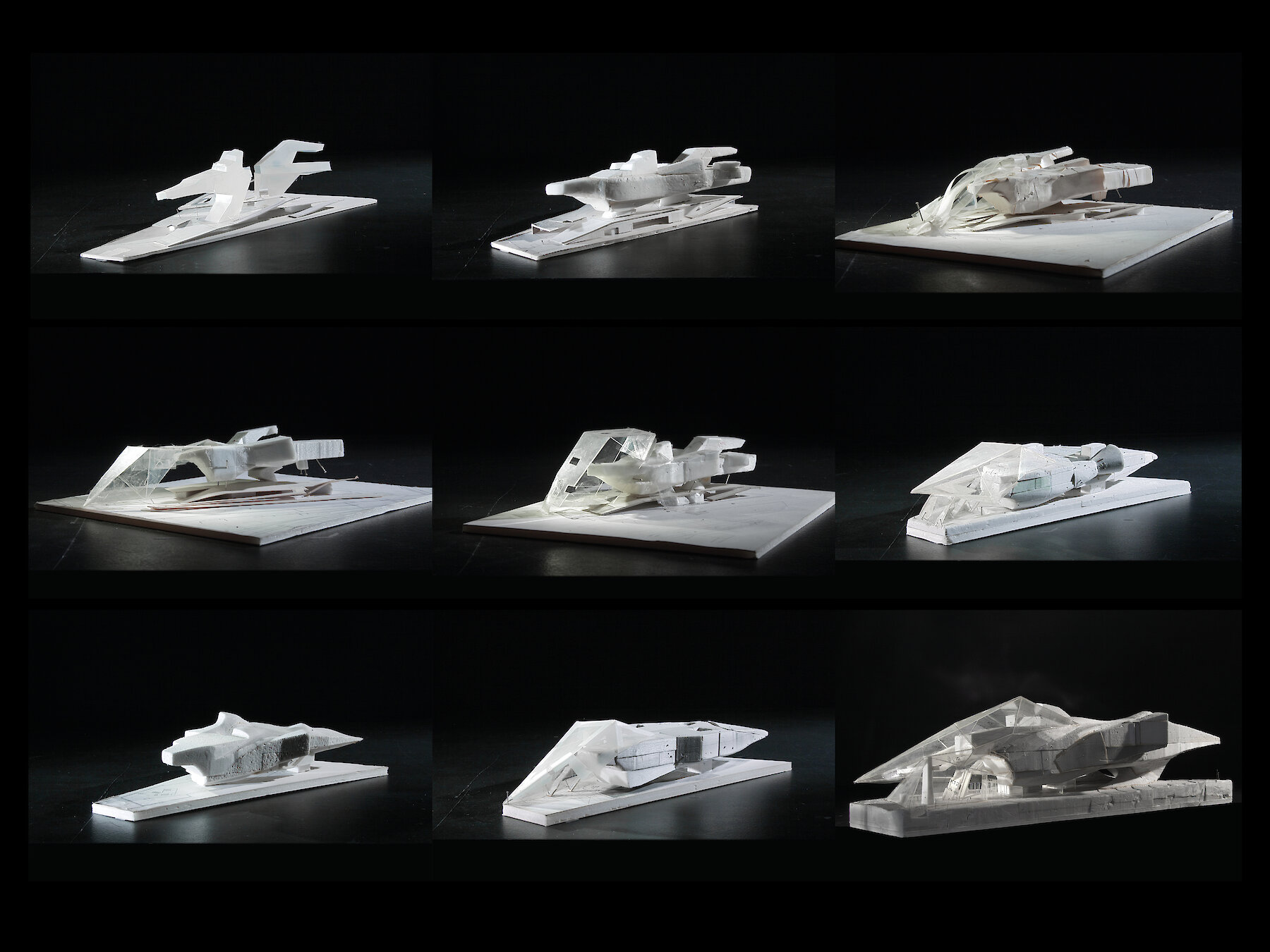

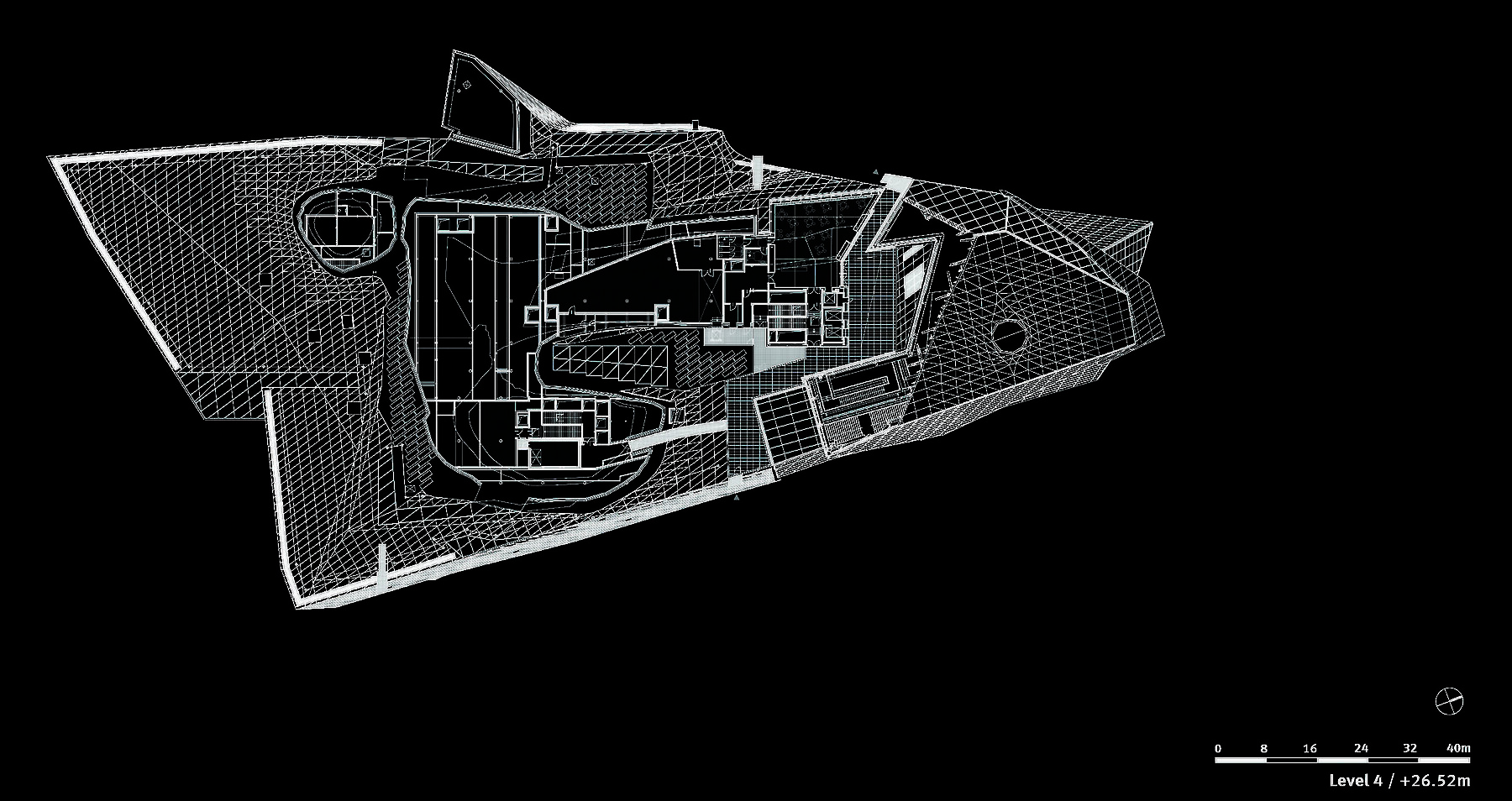


- Location
- Lyon, France
- Client
- Conseil Géneral du Rhône
- Competition
- 2001, 1st Prize
- Start of planning
- 2002
- Start of construction
- 2006
- Opening
- 2014
- Site area
- 20975 m²
- Gross floor area
- 46 476 m²
- Net floor area
- 26700 m²
- Gross volume
- 195 206 m³
- Length
- 190 m
- Width
- 90 m
- Height
- 41 m

Raimund Koch

Sergio Pirrone

Sergio Pirrone

Sergio Pirrone
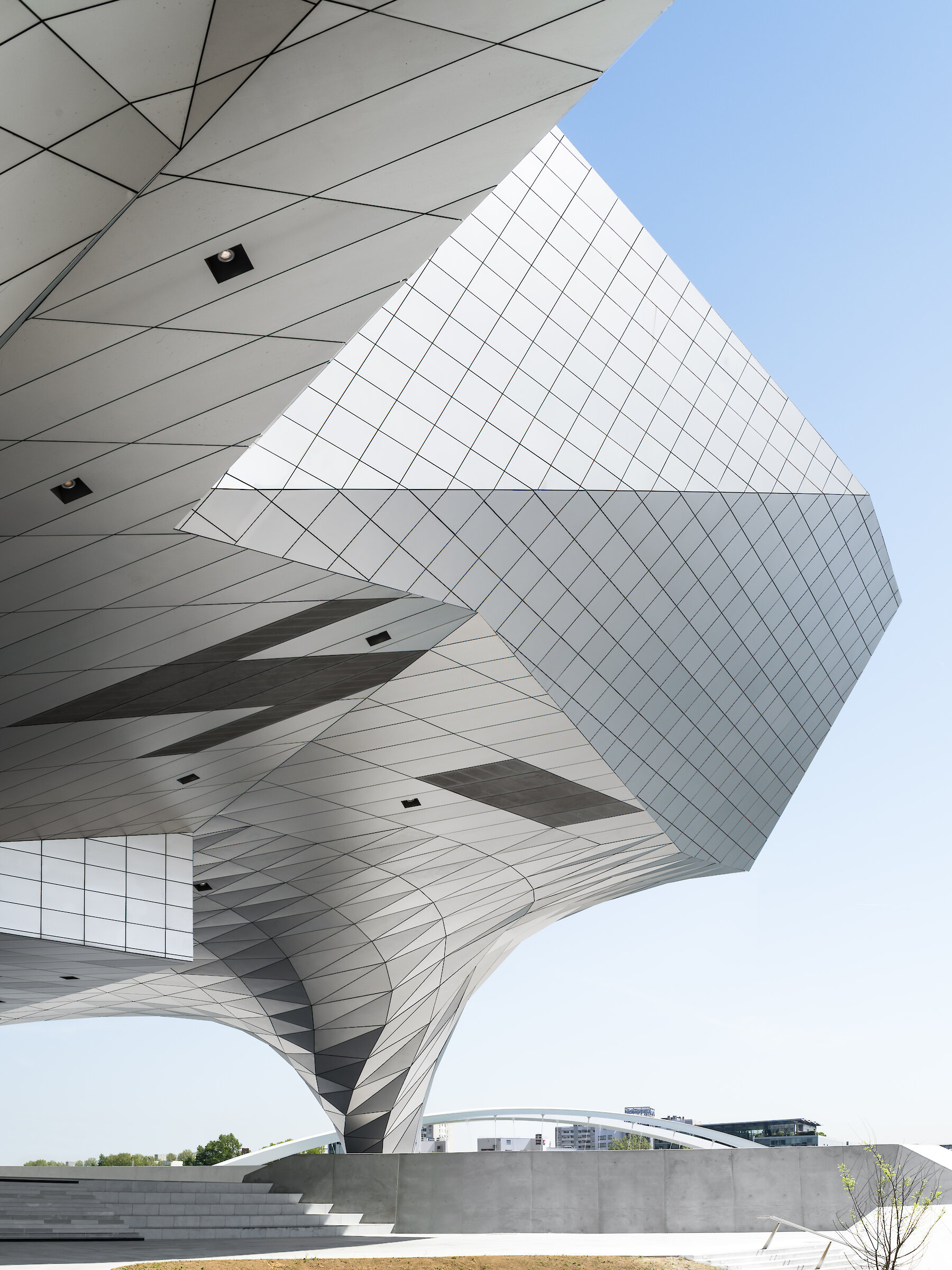
Raimund Koch
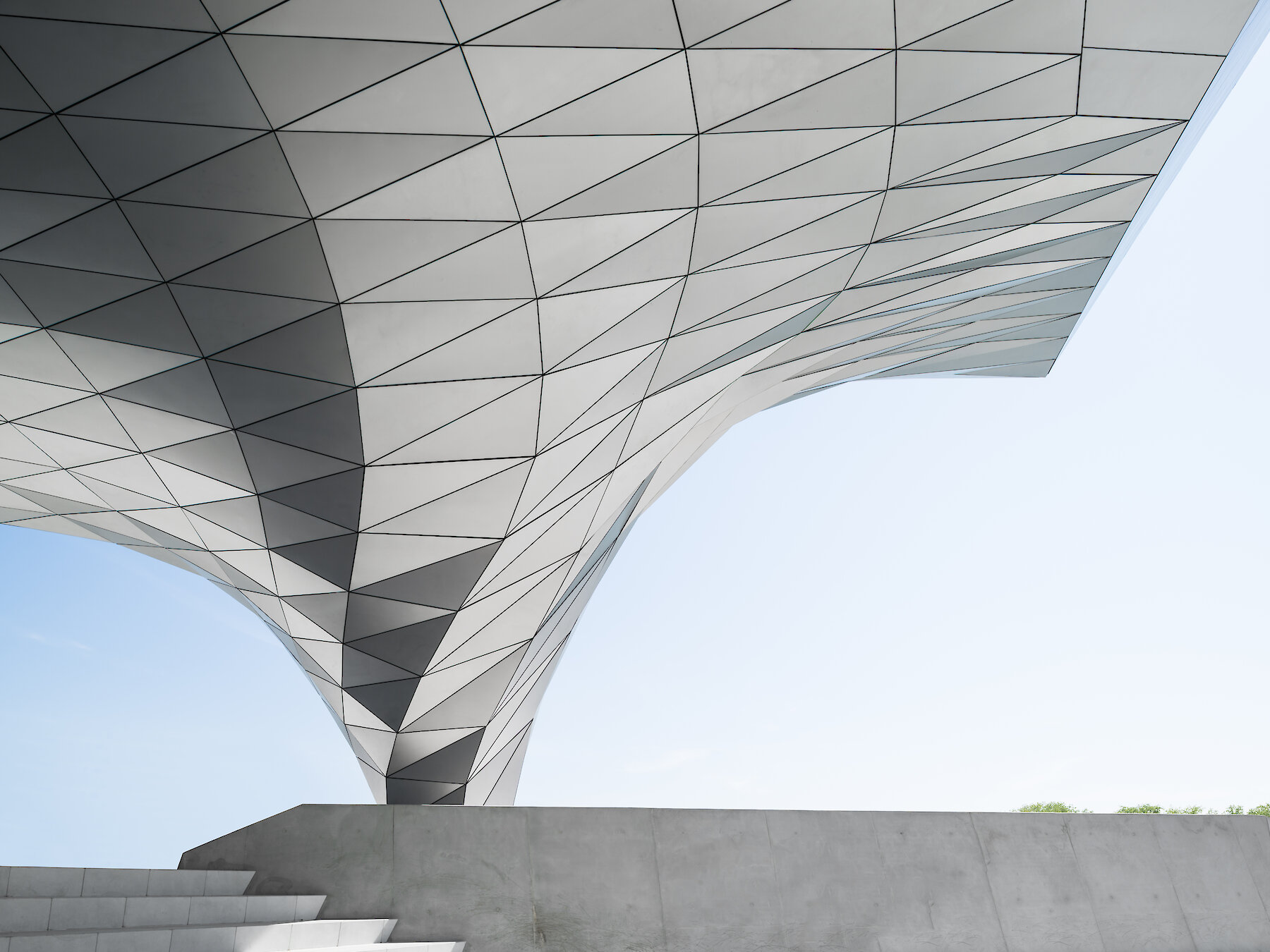
Raimund Koch

Raimund Koch
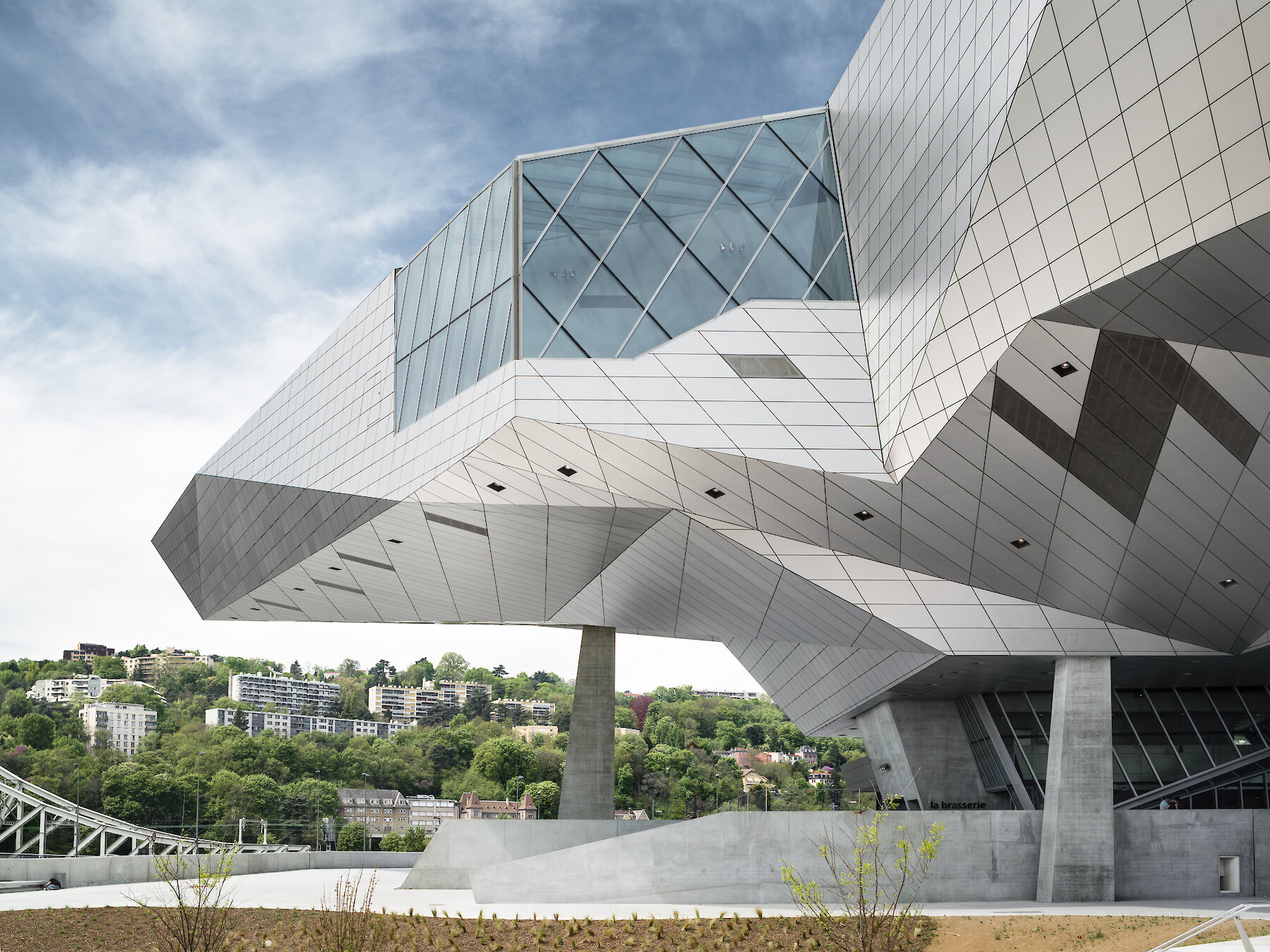
Raimund Koch
On the map
Related projects
Museum of Contemporary Art & Planning Exhibition (MOCAPE)
Shenzhen, China
2007–2016


Akron Art Museum
Akron, Ohio, USA
2001–2007


